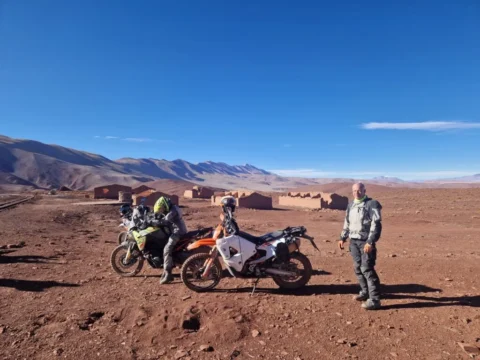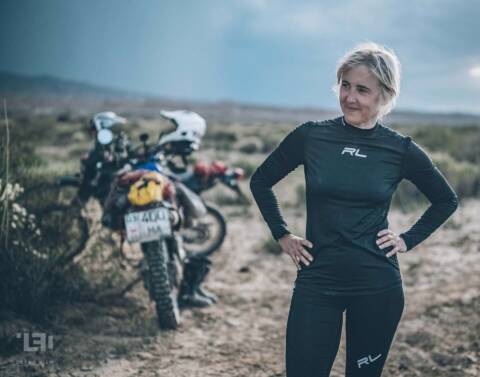Motorcycle Trip to India: Himalayas, Darjeeling, Sikkim, Rumtek. Travel Diary.
India is a country full of contrasts, and motorcycle trips through this fascinating region offer unforgettable adventures. For motorcycle enthusiasts, traveling through the picturesque Ladakh or Sikkim, challenging routes in the Himalayas, and the tranquil tea plantations in Darjeeling is a perfect opportunity to experience the culture, history, and nature of India. Here, I will highlight some of the most interesting places we visited during our motorcycle trips in the Himalayas, India. I will also address safety and the adventures that await brave travelers.
MOTORCYCLE TRIP INDIA – RUMTEK
After leaving Bhutan, we have to get used to the crowded and bustling India again. Plus, there’s the heat. From Jaigaon, we want to get to Sikkim as quickly as possible, meaning back to the mountains. We only need to cover 260 km in the heat. The road isn’t as bad as we expected. The traffic seems lighter than we anticipated. The weather is also in our favor – we have overcast skies all day, making the temperatures bearable. The only “mishap” of the day is a small navigational error, which resulted in passing through the awful and exceptionally crowded Siliguri.
MOTORCYCLE TRIP INDIA – “GATEWAY TO NORTHEAST INDIA”
Siliguri, located in West Bengal, is a key transportation and trade hub, known as the “Gateway to Northeast India.” The city is served by two main railway stations (New Jalpaiguri and Siliguri Junction) and Bagdogra Airport, connecting it with the rest of the country and neighboring regions. Attractions such as Mahananda Wildlife Sanctuary, ISKCON temple, and Hong Kong Market attract tourists. Siliguri is also a popular starting point for motorcycle trips to Sikkim, Darjeeling, and Bhutan, offering picturesque routes and rich cultural experiences.
Our planned route bypassed Siliguri by far. From Siliguri to Sikkim is not far anymore. Unfortunately, it turns out that we encounter a large wave of Indians heading to Sikkim for the Hindu festival of Durga Puja.
MOTORCYCLE TRIP INDIA – DURGA PUJA
Durga Puja is one of the most important Hindu festivals, especially celebrated in West Bengal. The festival celebrates the victory of goddess Durga over the demon Mahishasura, symbolizing the triumph of good over evil. It lasts five days and includes colorful processions, rituals, dances, and music. The streets are decorated with pandals (temporary temples), and devotees offer prayers and sacrifices to the goddess’s images. Durga Puja is a time of joy, family, and community gatherings, as well as culinary feasts.
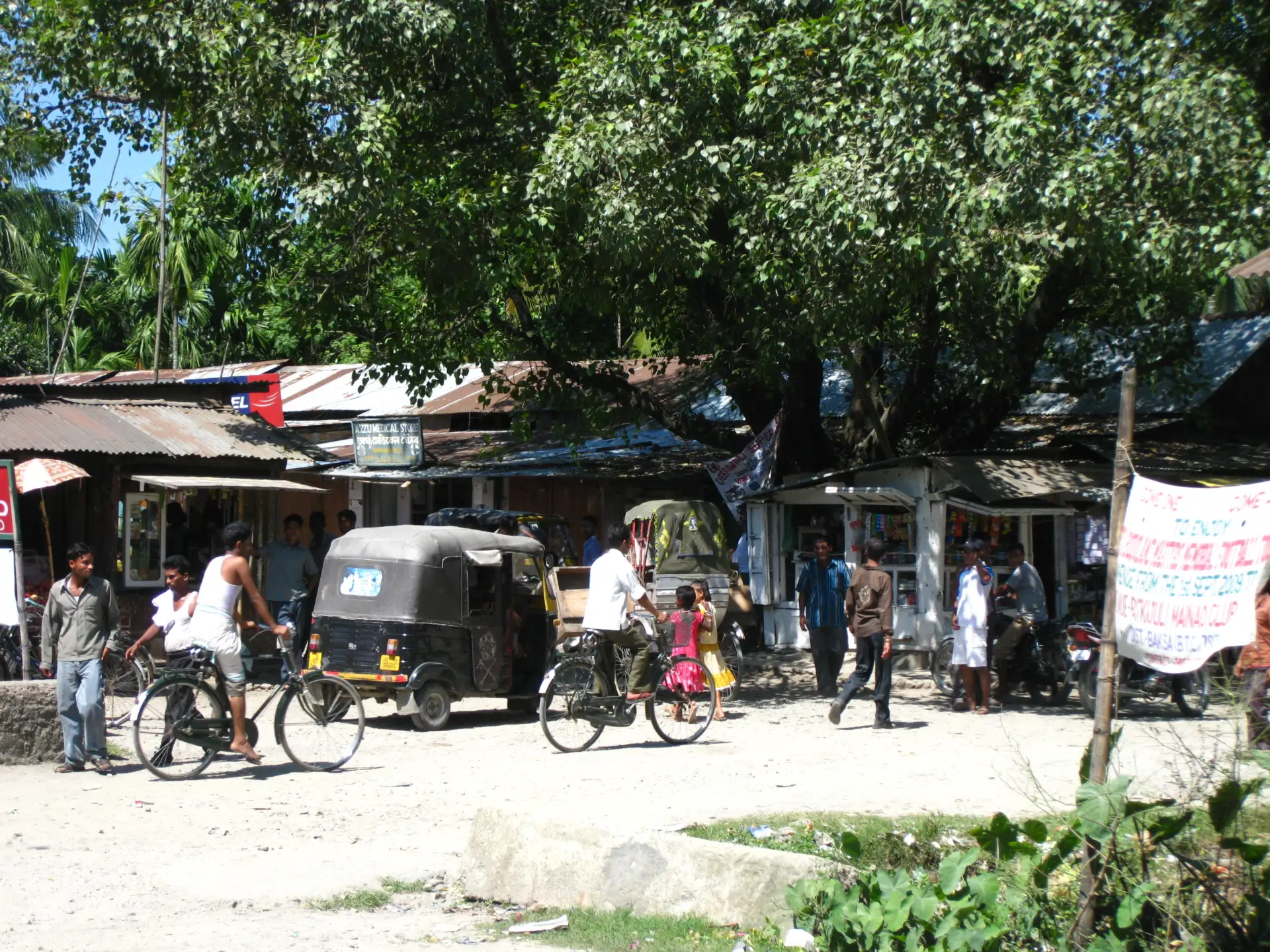
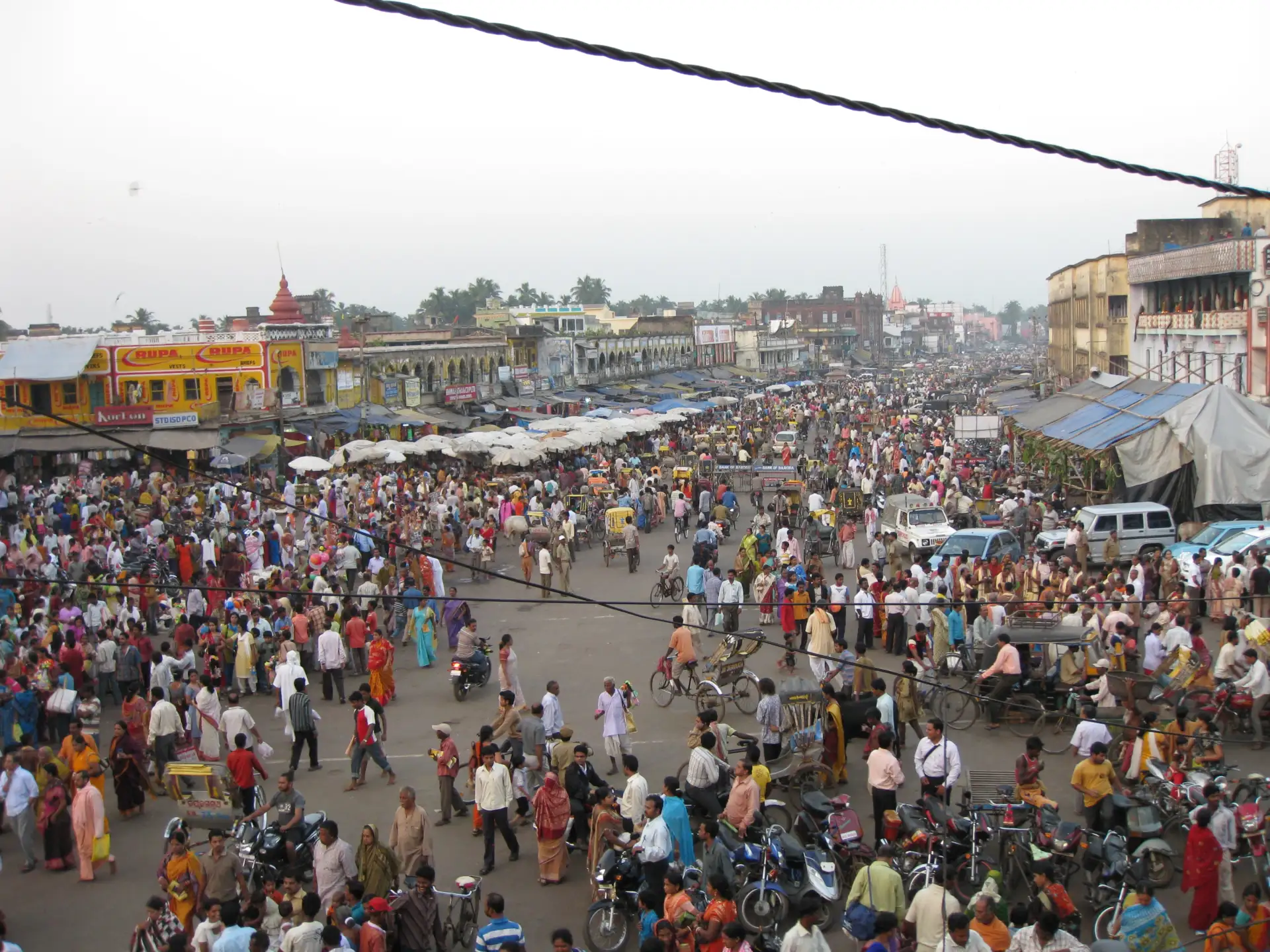
EXPERIENCES ON THE WAY TO RUMTEK
The traffic is terrible, and the road is narrow, winding, and full of potholes. Most jeeps drive crazily, overtaking on bends and ignoring oncoming traffic. This, of course, causes several sharp brakes and skids on our motorcycles. We also see at least a few wrecked trucks at the bottom of the valley. At the West Bengal-Sikkim border, our permits are meticulously checked. All foreigners traveling to Sikkim must have special permits to travel in this region. The last four kilometers to Rumtek we ride in the rain. It’s high time to end the ride for the day.
In Rumtek, we stay in a small guesthouse located in the Buddhist monastery complex for which Rumtek is famous. We manage to visit the “Black Hat” sect’s monastery that same evening.
MOTORCYCLE TRIP INDIA – RUMTEK MONASTERY
Rumtek Monastery, located about 24 km from Gangtok in Sikkim, is one of the most important Buddhist monasteries in India. Built in the 16th century and restored in the 1960s by the 16th Karmapa, it serves as the main center of the Karma Kagyu school of Tibetan Buddhism. Known for its impressive architecture, ornate prayer halls, and murals, the complex includes the main temple, a Buddhist academy, a monks’ monastery, and a stupa containing relics. Rumtek attracts pilgrims and tourists, offering a peaceful place for meditation and panoramic views of the surrounding mountains. Festivals and traditional ceremonies, such as the Cham dance, add to its religious and cultural significance.
Then we hunker down in our cozy room. It starts to rain heavily. It rains all night and the next day without stopping. We can’t go anywhere – the wall of water makes it almost impossible to see. We have a forced day of rest, sleeping, and reading books. The next night is also rainy, but the morning surprises us with sunshine, and we can continue our journey north of Sikkim.

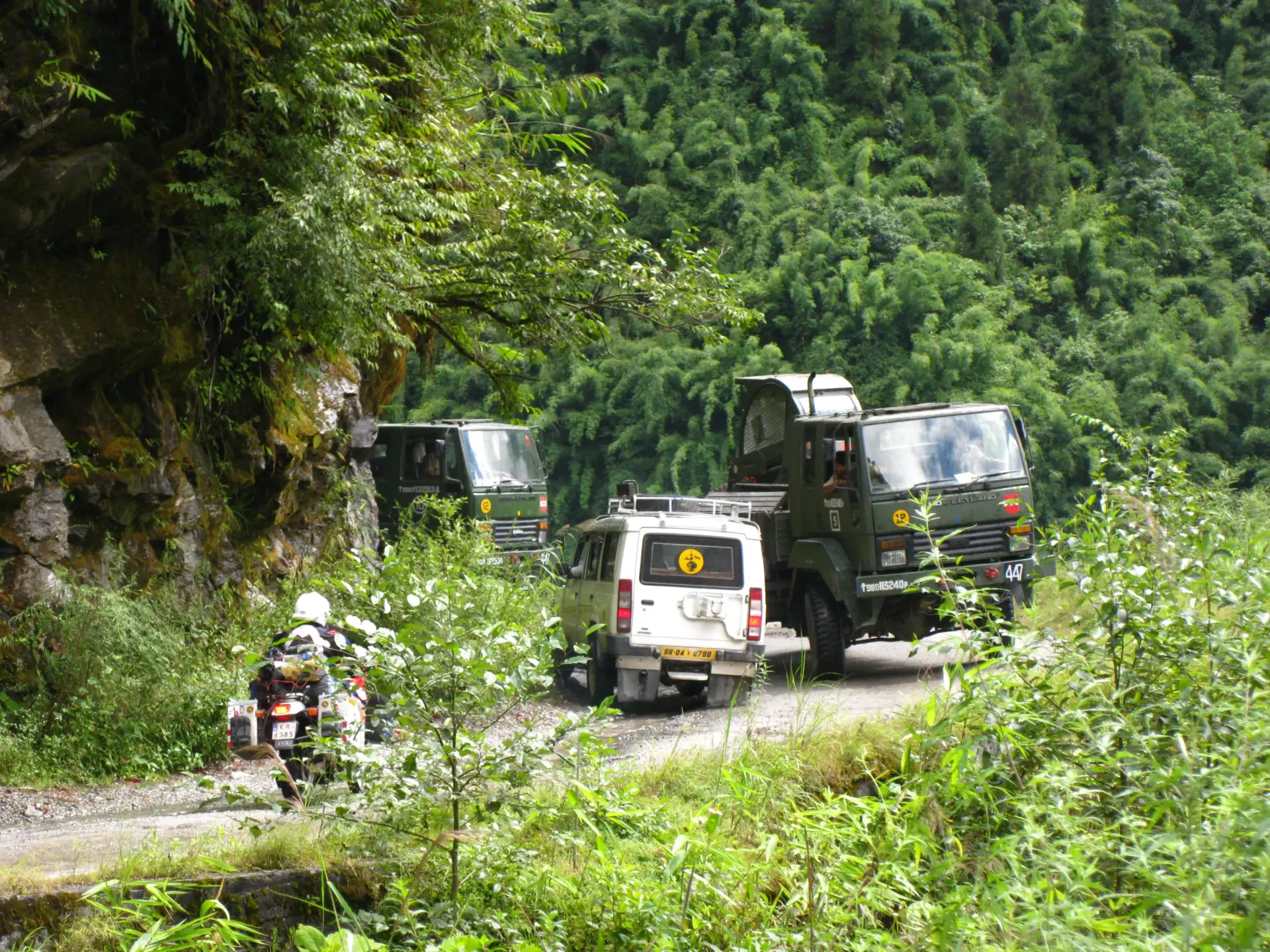
MOTORCYCLE TRIP INDIA – SIKKIM
Sikkim is a mountainous region in northeastern India, bordering Nepal, Bhutan, and Tibet. Known for its stunning Himalayan landscapes, including views of the world’s third-highest peak, Kanchenjunga. Sikkim is popular among tourists and motorcyclists, offering scenic routes, Buddhist monasteries (like Rumtek), and rich culture and traditions. The region is also known for its organic tea and orchid cultivation, and its biodiversity attracts nature lovers. Sikkim is one of the greenest and cleanest states in India.
MOTORCYCLE TRIPS TO INDIA – SINGHIK
The “national highway” to Singhik, charmingly named “North Sikkim Highway,” has very little in common with a highway. We don’t expect it to be one either. Unfortunately, the road, despite being the most important in the entire region, turns out to be a major failure. The width of the road no longer frightens or surprises us, but its condition is much worse than we thought. Every few kilometers, we have to deal with landslides or huge potholes. The 70 km to Singhik takes us almost 3 hours. Towards the end, we encounter a large convoy of jeeps with Indian tourists. Everyone gets blocked, and we have to crawl at the end of the group. Singhik, supposedly offering beautiful views of the Kanchenjunga massif, greets us with rain and clouds. It seems the downpour that caught us two days earlier in Rumtek has moved to northern Sikkim. We can forget about seeing Kanchenjunga.
Singhik is a picturesque village in northern Sikkim, known for its stunning views of the Kanchenjunga massif, the world’s third-highest peak. Often shrouded in mist and clouds, it offers unforgettable landscapes that attract tourists and nature lovers. Singhik is also a starting point for treks and expeditions into Sikkim’s interior. The village offers a chance to experience local culture and hospitality, often staying with local families.
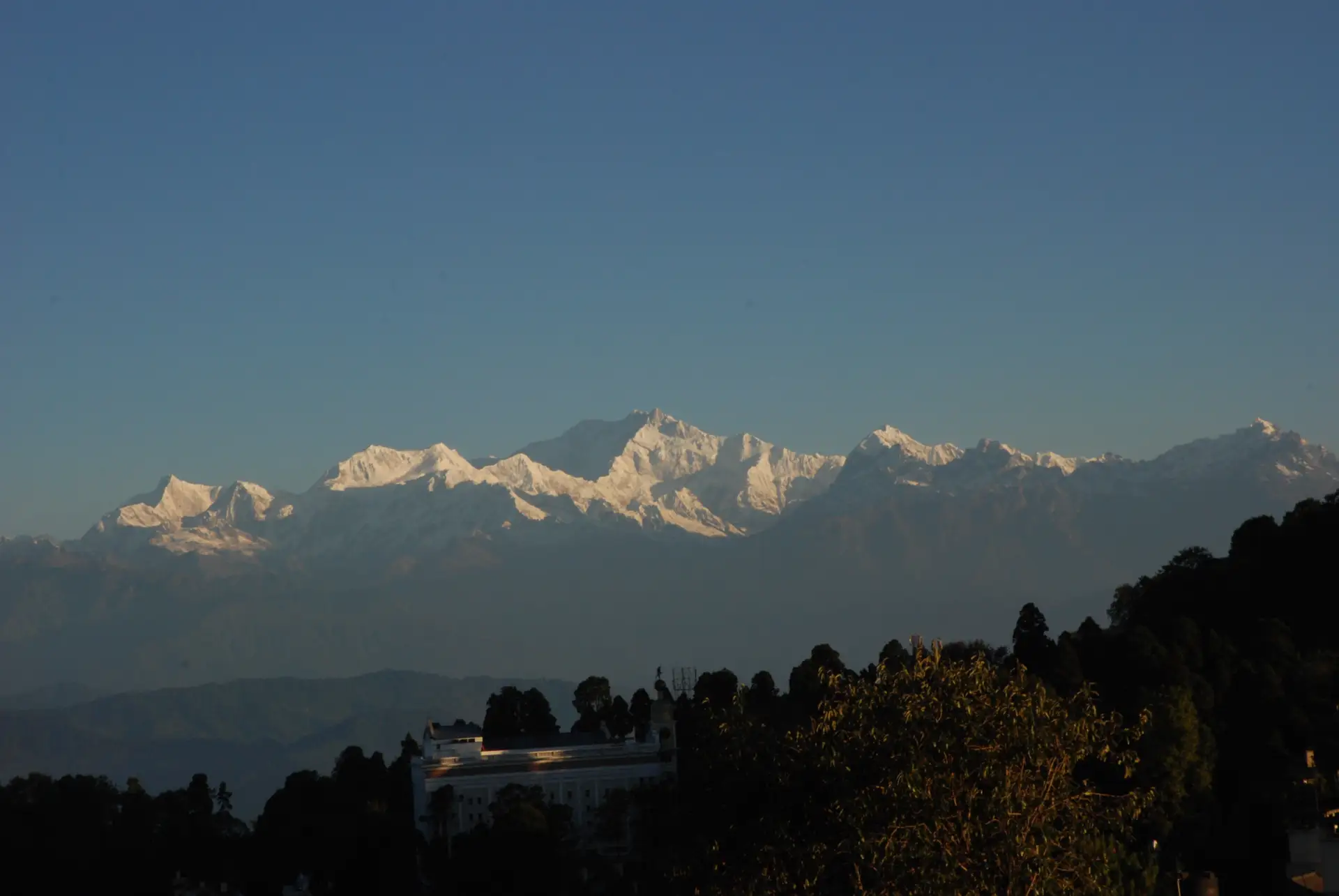
We decide against going further north, where we were told, “the good road ends, and the dirt road begins.” With the current weather conditions, we would have to plow through considerable mud, and we have no desire for that. In Singhik, we stay with a local Sikkimese family. Communication is mainly through gestures, but it’s very homely and atmospheric. For dinner and breakfast, we get local delicacies served in pots. The only drawback is our “friend” – a large black spider resembling a tarantula that settles in our bathroom and refuses to leave. We have no choice but to make friends with it for one night.
From Singhik, we want to travel to western Sikkim. This time we plan to take local roads – no longer the highway. Knowing the state of the highway, we are a bit worried. Quickly, we find out that all roads in northern Sikkim, except the “highway,” are blocked and completely impassable. This is the result of the recent rains and the earlier monsoon season. There are so many landslides that local authorities can’t keep up with clearing them. We confirm the poor road conditions with several local carriers. Everyone says the same thing.
MOTORCYCLE TRIP INDIA – GANGTOK
Gangtok, the capital of Sikkim, is a bustling city located in the Himalayas, known for its beautiful landscapes and rich culture. It is a popular tourist destination, offering attractions such as Rumtek Monastery, Enchey Gompa, and Tashi Viewpoint, which offers panoramic views of Kanchenjunga. Gangtok also boasts a well-developed tourist infrastructure, with numerous hotels, restaurants, and shops. The city is also an important trade and education center in the region, attracting both local and international tourists.
We have no choice but to return to Gangtok via our favorite “highway” and from there head west through the unaffected southern part of the region. In Gangtok, we stay for one night. We want to experience a bit of civilization. Jurek craves Italian food – we haven’t had a proper pizza in almost six months. He insists on finding an Italian restaurant, so we spend half the evening wandering the city in search of a pizzeria. It turns into a long walk, but we finally succeed! We find the only pizzeria in town.
That day, we also meet a group of Poles. Overall, Gangtok does not leave an overwhelmingly positive impression on us. The largest city in Sikkim and the regional capital lacks the charm of smaller towns scattered in the valleys.
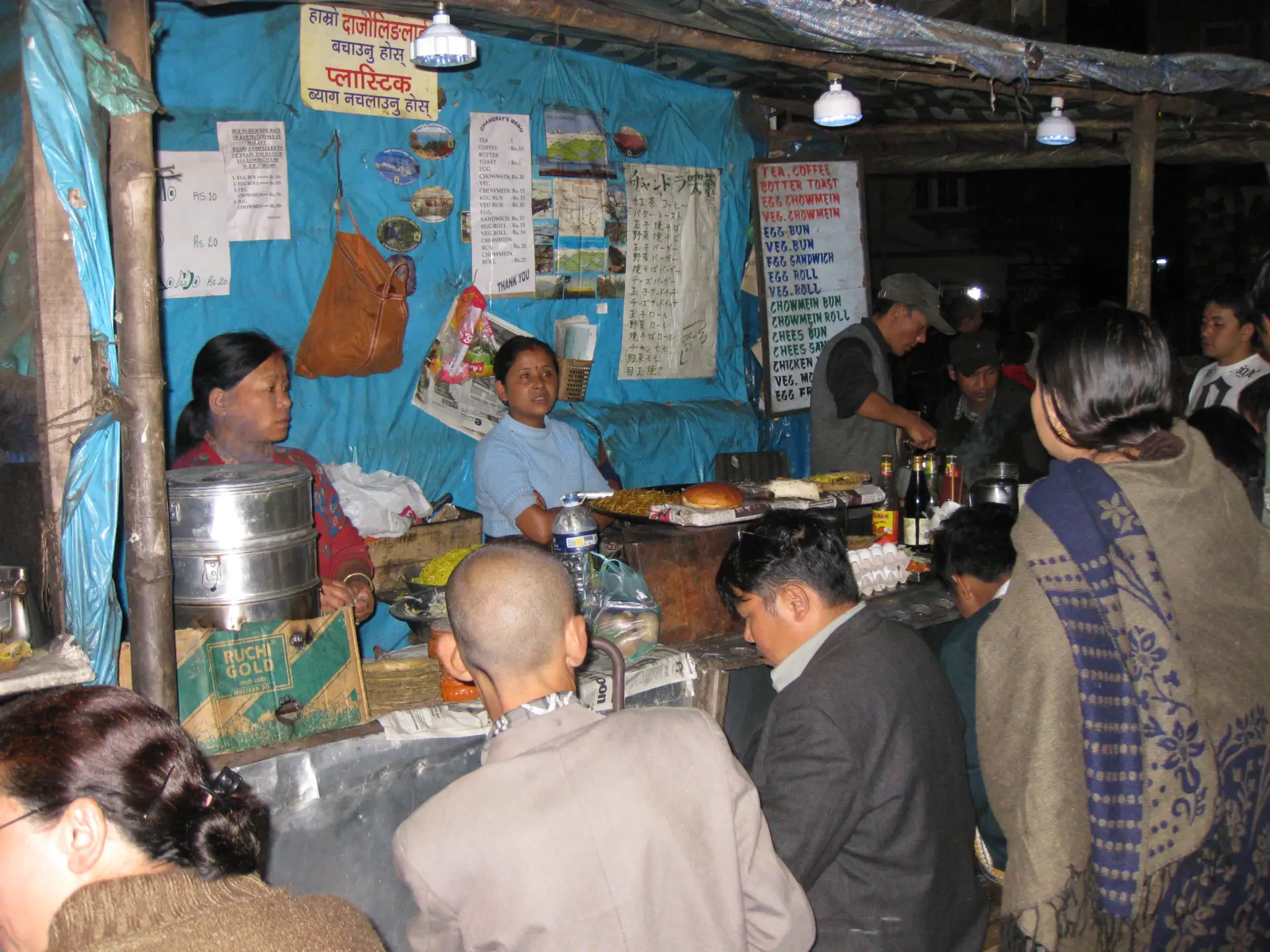
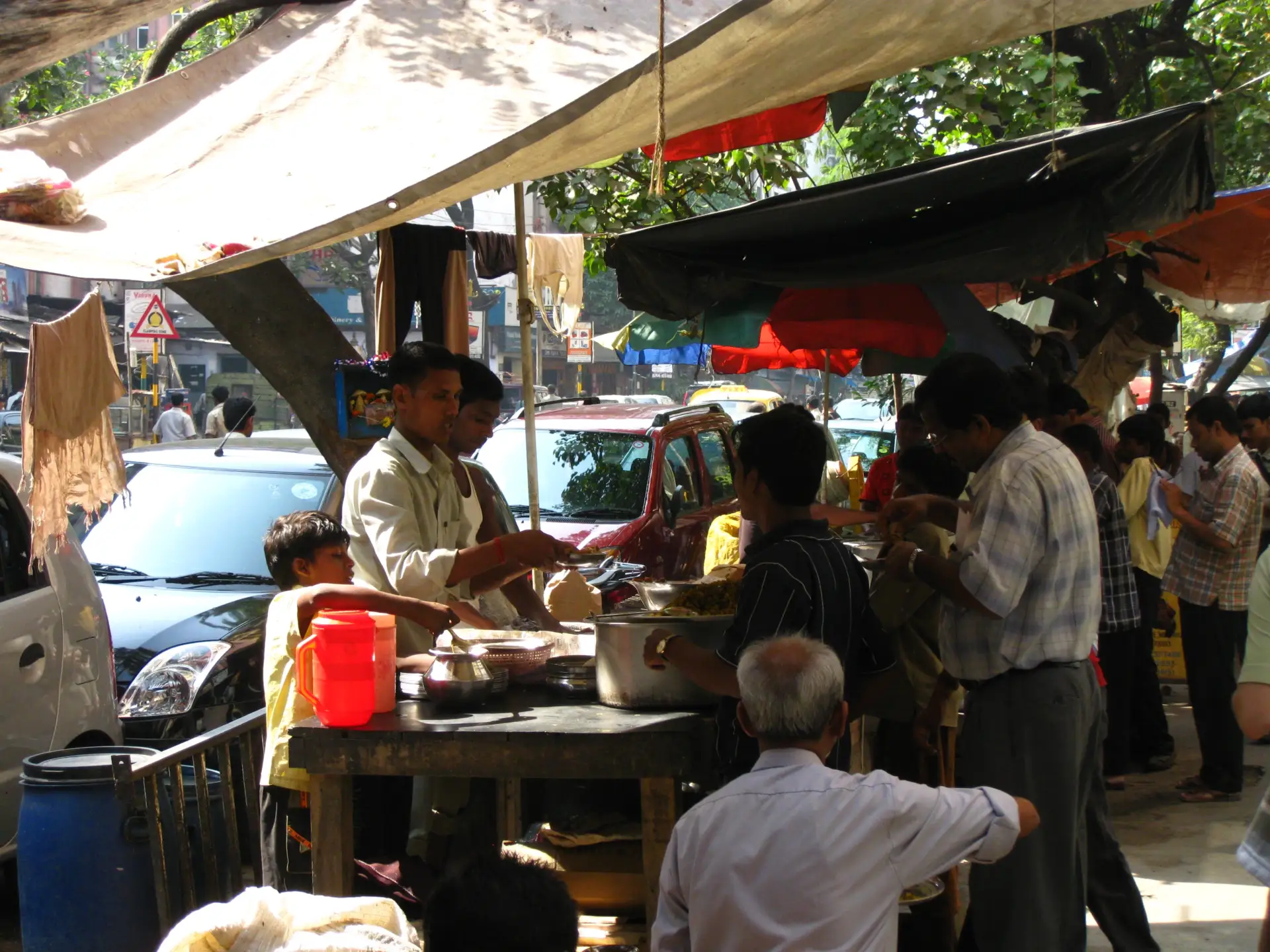
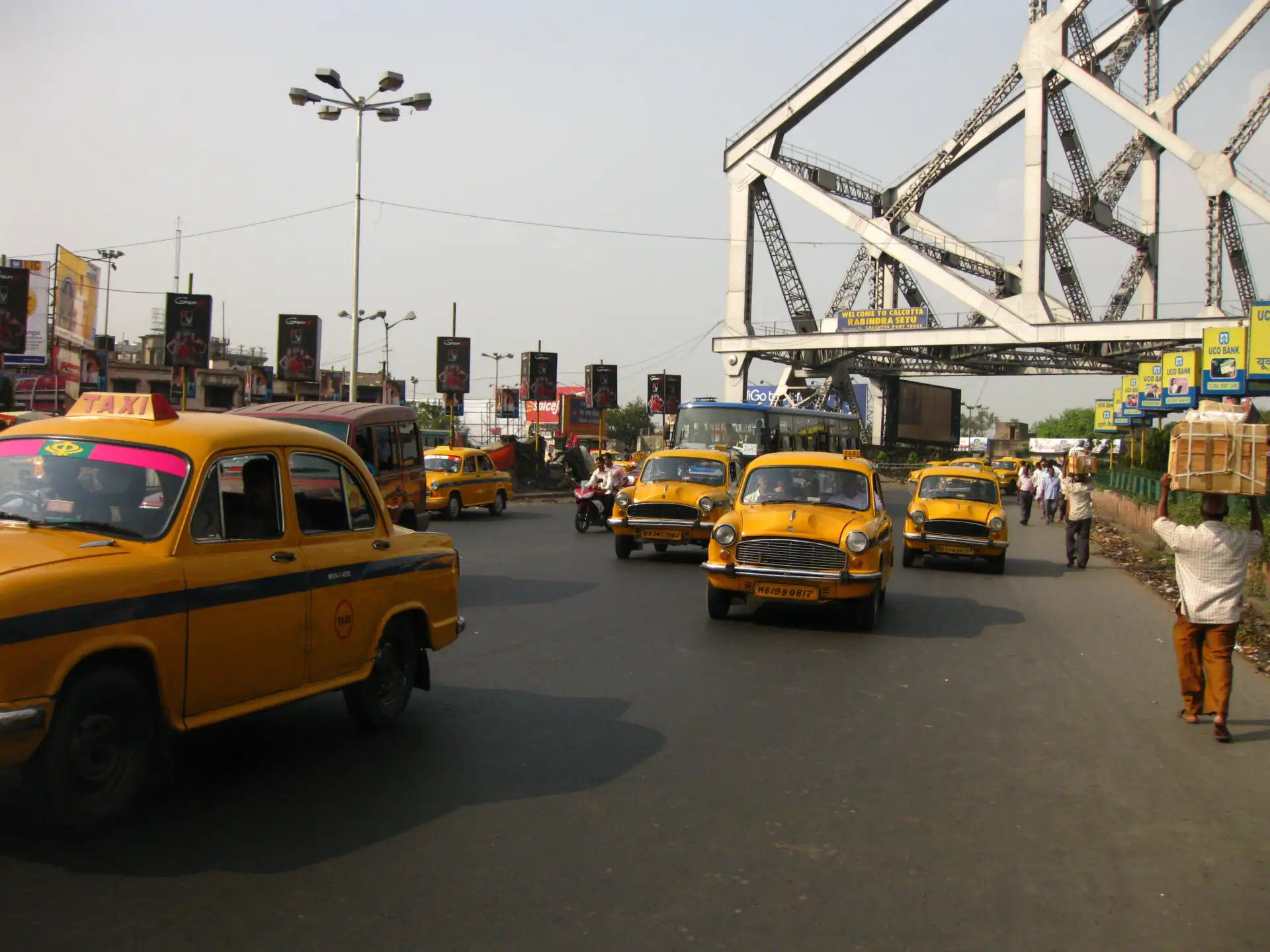
MEETING BON MONKS
The Bon religion focuses on spirituality, meditation, and harmony with nature. It stems from Buddhist traditions, and its practices include daily meditations, prayers, and rituals related to nature’s cycles. Bon followers believe in reincarnation and strive to achieve enlightenment through inner development and understanding of the universe.
Peeling is one of the favorite vacation spots for residents of West Bengal. They escape here from the heat of the Indian lowlands. From Peeling, you can enjoy the most beautiful view of Kanchenjunga in all of Sikkim.
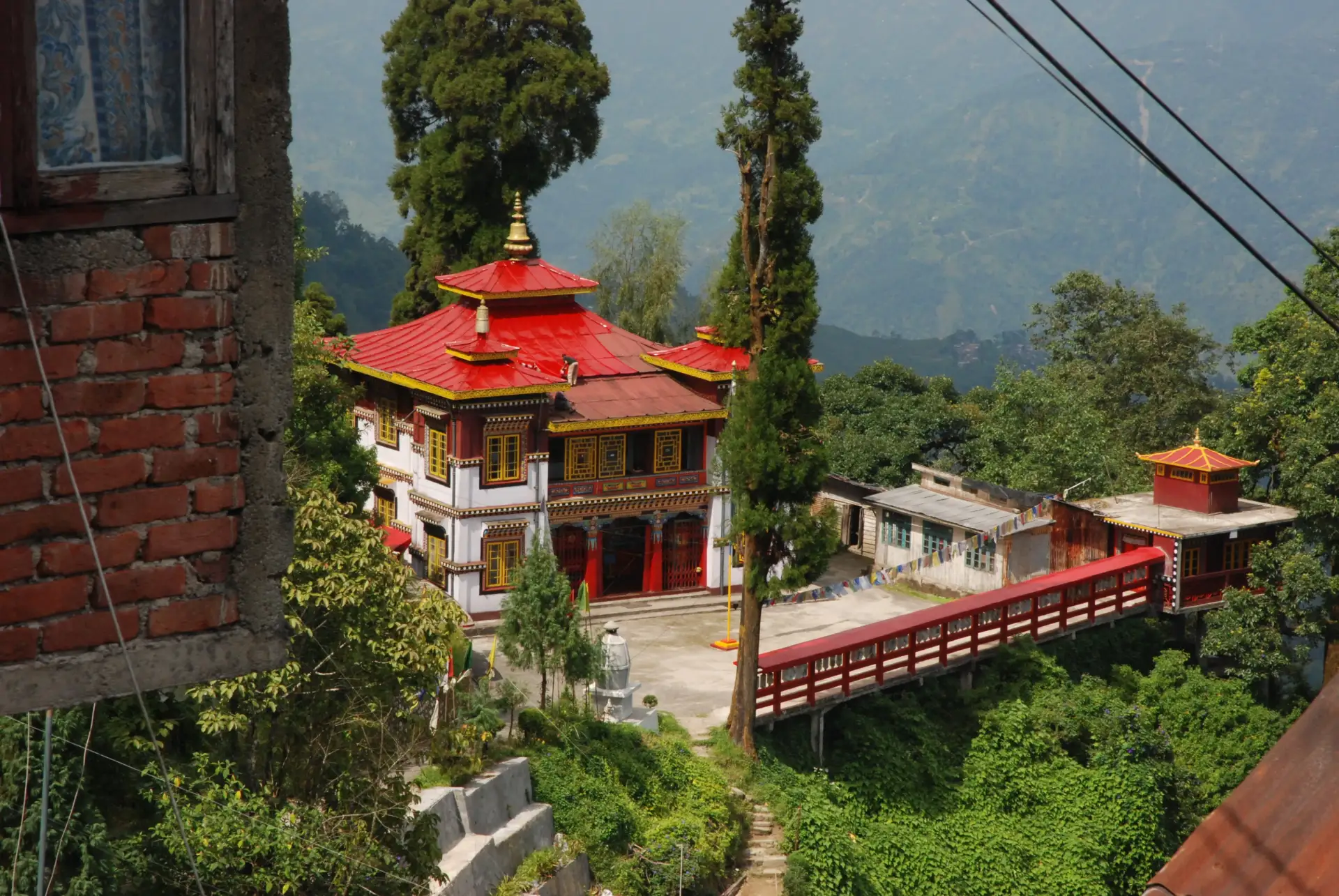
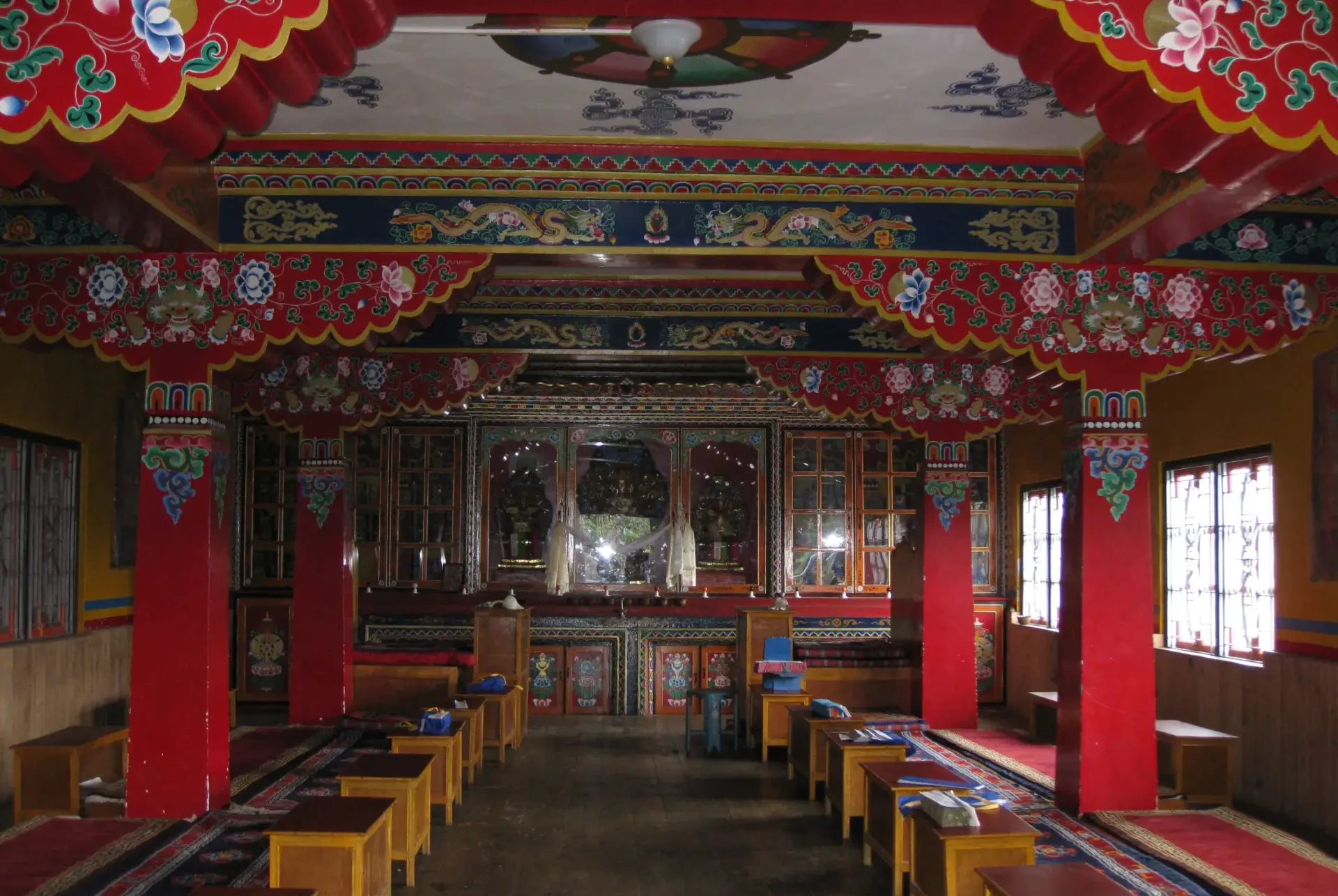
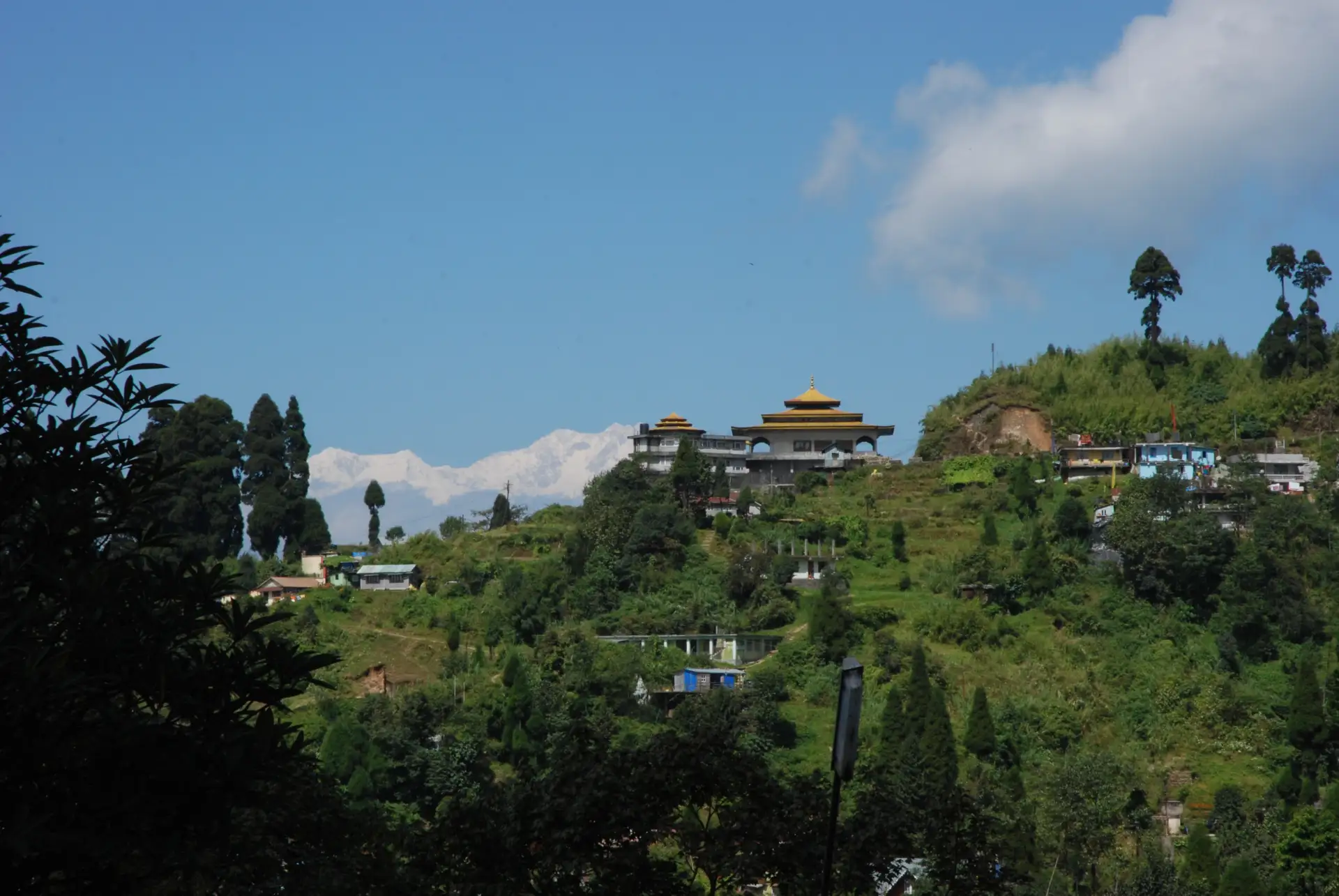
VIEWS OF KANCHENJUNGA, THE THIRD-HIGHEST PEAK IN THE WORLD
Peeling is a picturesque town in western Sikkim, known for its incredible views of Kanchenjunga, the third-highest peak in the world. It is a popular tourist destination, especially among residents of lowland regions of India who escape here from the heat. Peeling offers a peaceful atmosphere and access to several important Buddhist monasteries, such as Pemayangtse and Sangachoeling. The town is also a base for trekking and expeditions into the Himalayas, offering opportunities to explore the surrounding forests and valleys. With its natural beauty and cultural heritage, Peeling attracts tourists seeking both relaxation and adventure.
Unfortunately, during our visit, the “Mountain” is constantly shrouded in thick clouds. However, we manage to walk around the area and visit several important Buddhist monasteries in Sikkim. All are beautifully located on cliffs, high above the valley. Unfortunately, it starts raining again in the evening. We are getting a bit tired of this Sikkim rain. Only in the morning does the weather improve, and through a “weather window” in the clouds, the mighty Kanchenjunga appears. Finally, we get to see it!
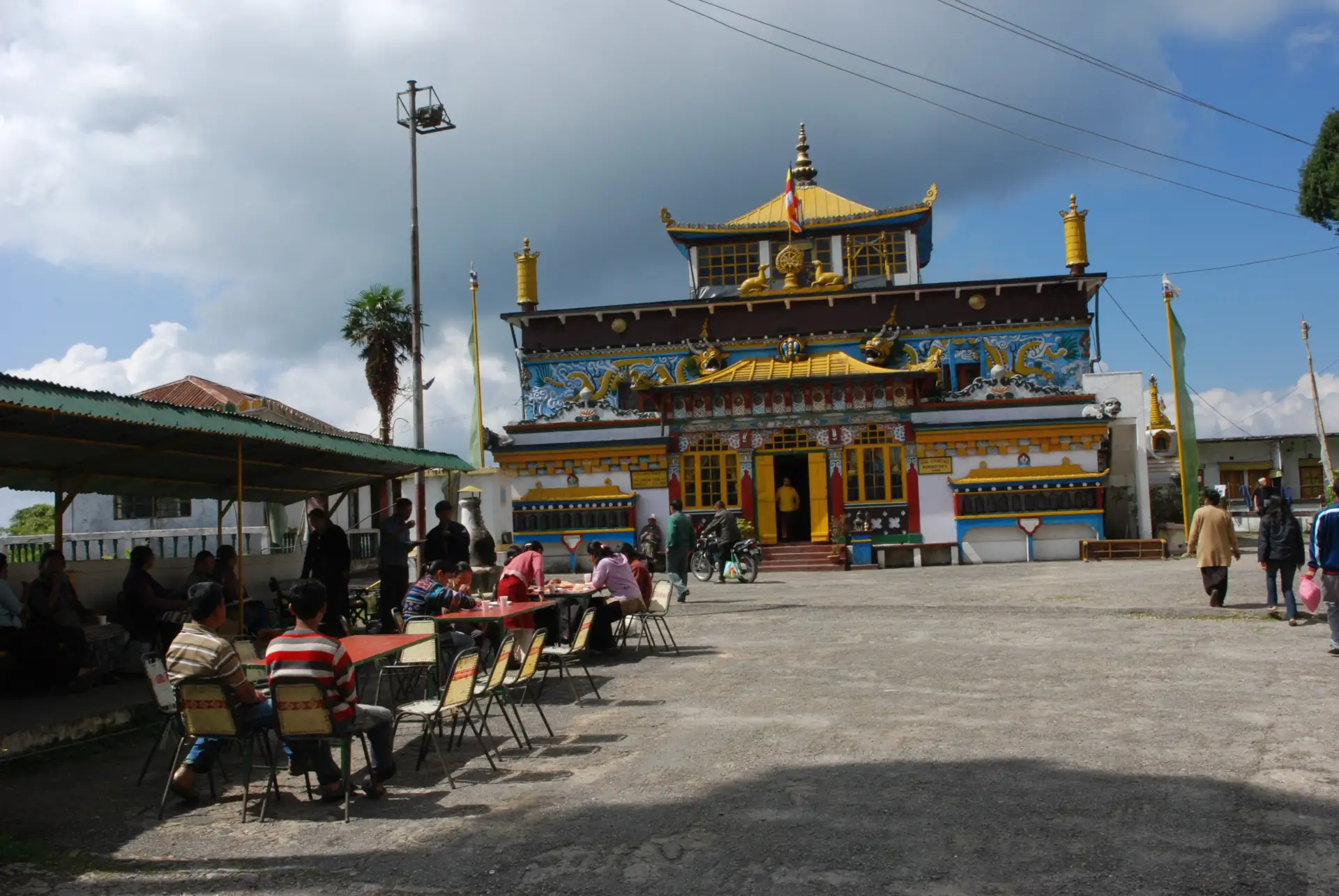
MOTORCYCLE THROUGH THE TEA PLANTATIONS OF DARJEELING
In Peeling, we change our plans a bit. Since the weather is still “hit or miss” and uncertain, we give up exploring smaller, dirt roads in Sikkim. From Peeling, we go directly to Darjeeling, where we plan to stay for a few days. As a farewell to Sikkim, Kanchenjunga shows itself to us for a longer time – a nice touch at the end.
Then we rush, of course via a side road, to Darjeeling in West Bengal. The road to Darjeeling, described in the guidebook as steep, turns out to be really very steep. For once, Lonely Planet isn’t wrong. Driving on steep, very tight, narrow, and bumpy switchbacks is very exciting. This is one of the more difficult routes of the last month! At the same time, it’s one of the most beautiful routes. Almost the entire road leads through tea plantations covering the steep slopes around Darjeeling.
MOTORCYCLING IN DARJEELING
Riding a motorcycle in Darjeeling is also quite a challenge. The city is very densely built and vertically spread over a steep slope. Every now and then, we have to navigate steep (and, as usual, bumpy) turns, and the traffic is heavy. In such topographical conditions, sudden stops of our heavy Honda Africa Twin motorcycles, forced by unpredictable maneuvers of the Indians, are neither easy nor pleasant. There’s really no place to stand upright, and all other positions while braking result in a fall in my case. I have no chance of keeping the loaded “beast.” So, I try not to stop, honking like crazy at everyone trying to cut in front of or behind me.
We manage to get through the whole city without any unpleasant surprises. At the top of the city, we find a very nice guesthouse, where luckily, there is still one room available. We leave the motorcycles chained to a fence on a narrow street just below the guesthouse.
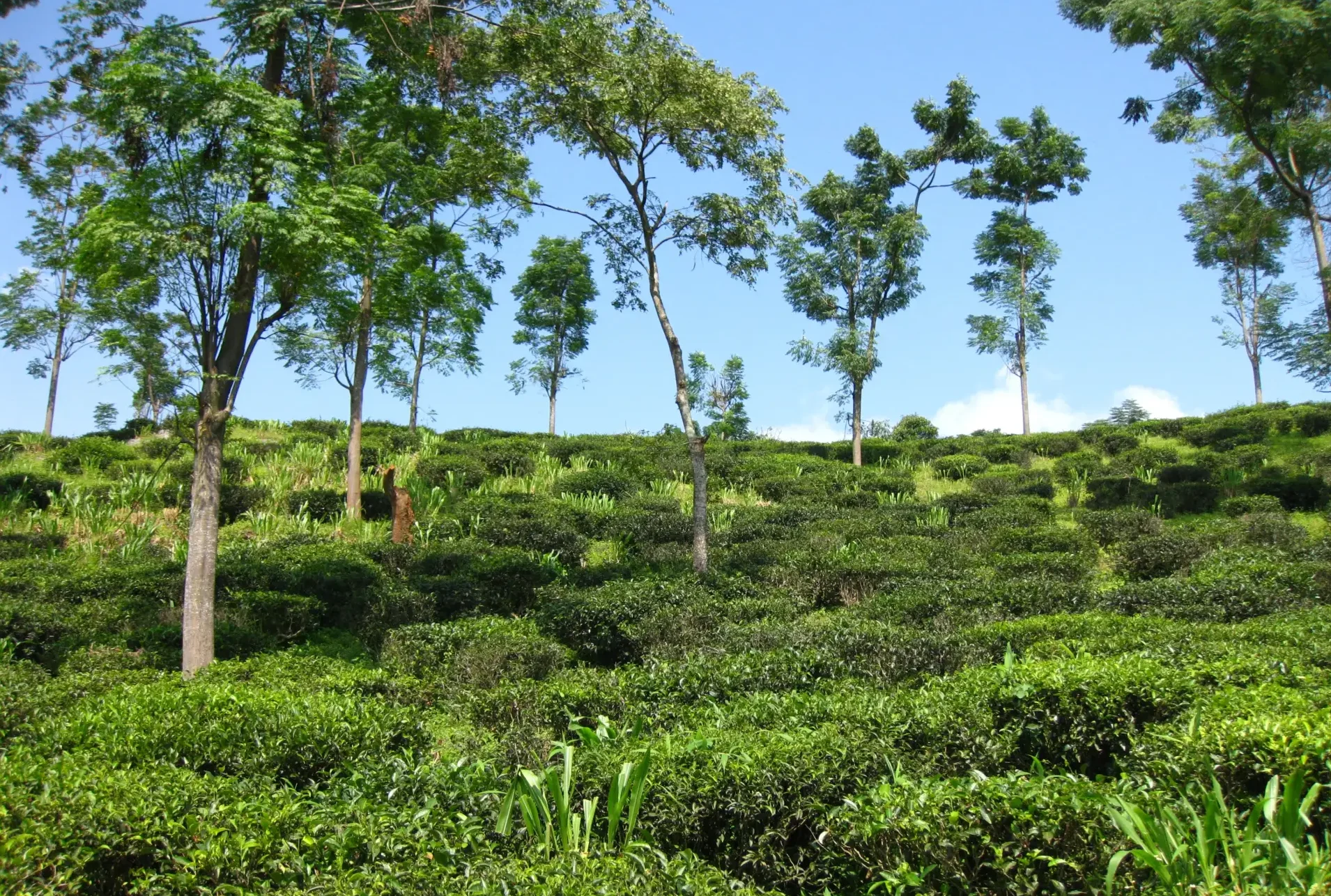

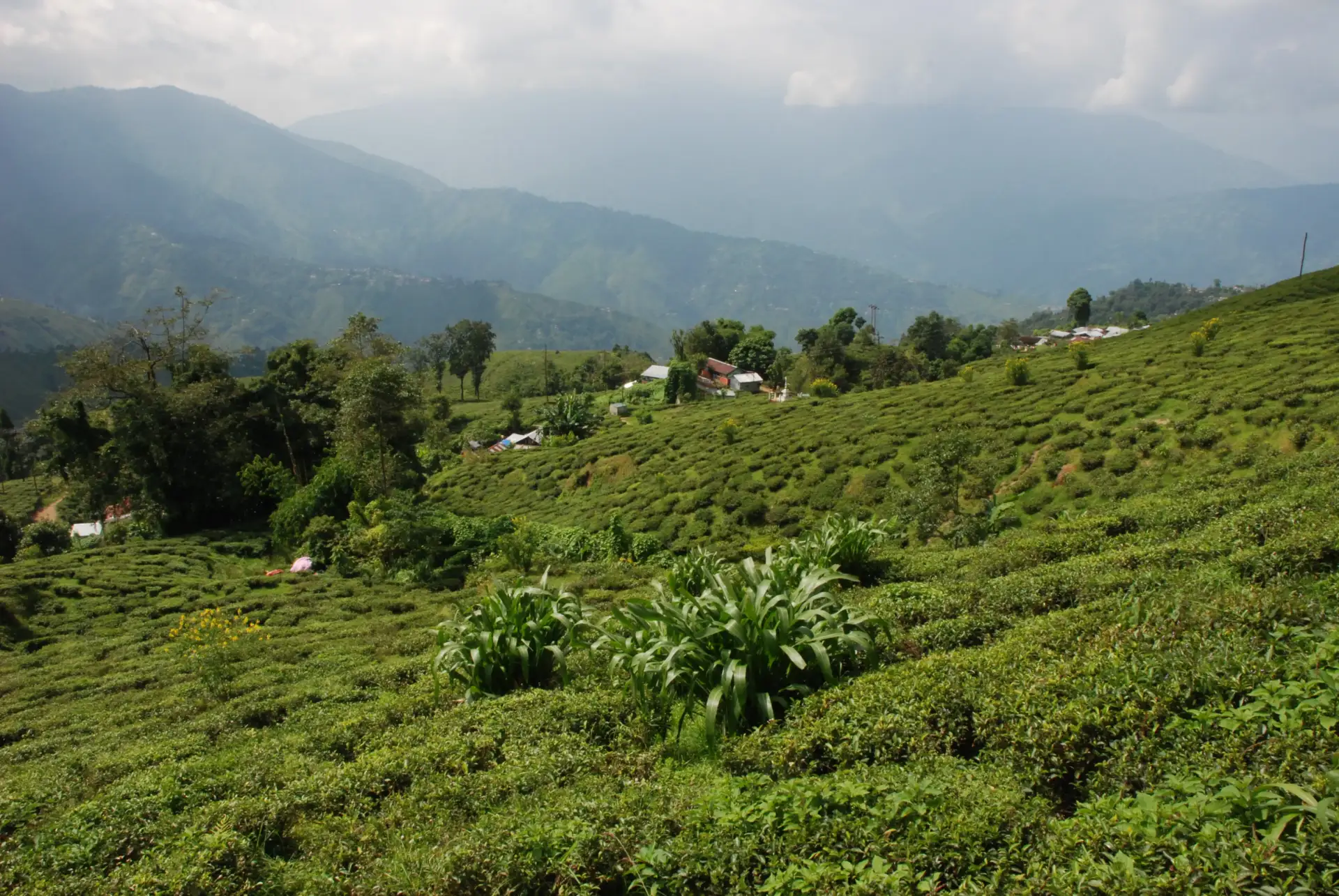
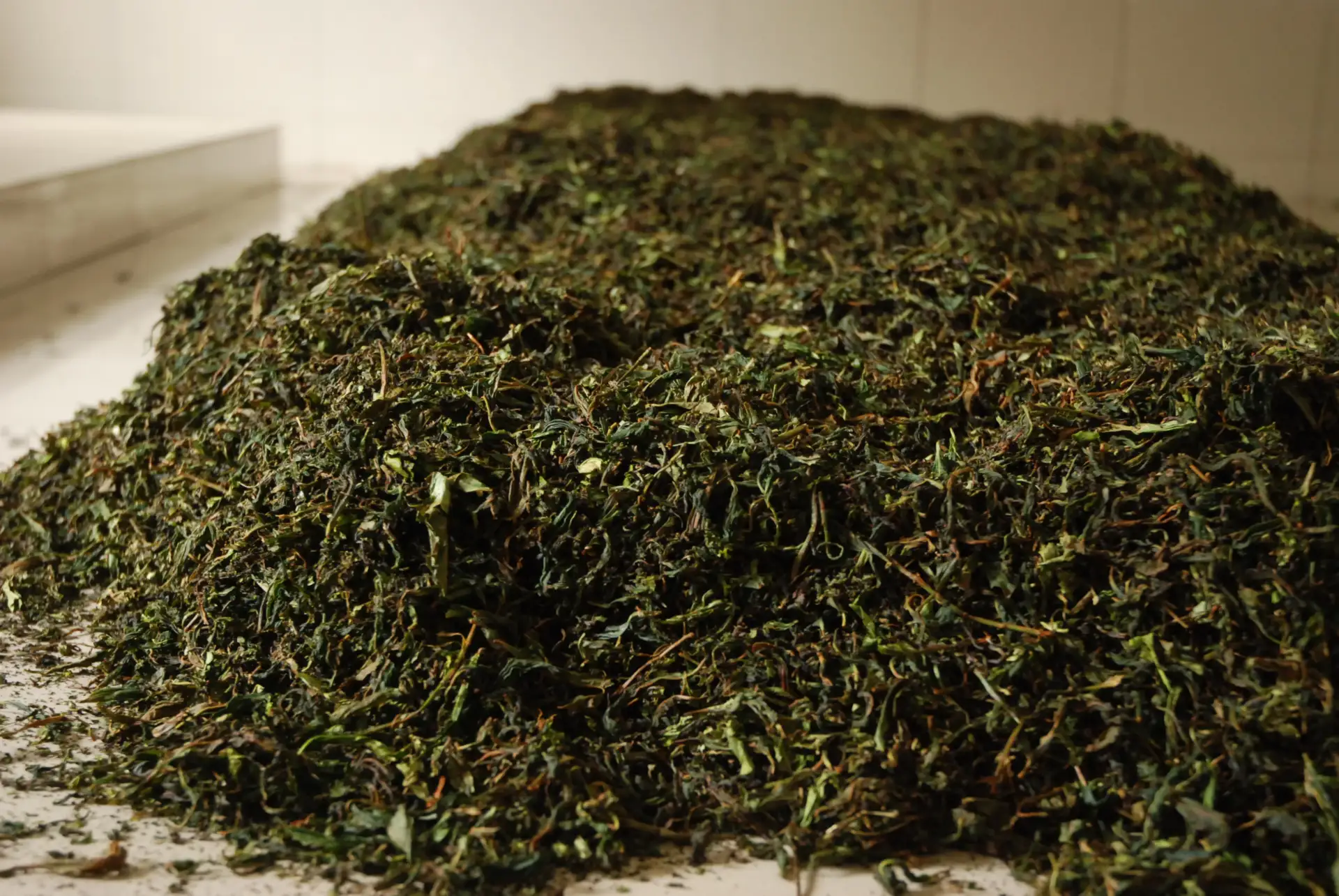
COLONIAL BUILDINGS OF DARJEELING AND HAPPY VALLEY TEA PLANTATION
In Darjeeling, colonial influences are clearly visible. Many buildings (especially schools) still remember colonial times. At the same time, the city has a carefree and idyllic atmosphere. A major attraction is the still-operating Darjeeling steam narrow-gauge railway. Of course, we have to take a ride on this whistling steam relic. Besides the steam railway, a must-do during a stay in Darjeeling is a visit to at least one tea plantation. We visit Happy Valley, the highest-located plantation. There, we can observe the entire tea-making process: from picking fresh leaves to packing them in beautiful boxes ready for shipment.
LEISURE TIME IN DARJEELING. A CLOSER ENCOUNTER WITH THE CULT ICON ROYAL ENFIELD
Visiting Buddhist monasteries in and around Darjeeling takes up the whole day. Intrigued by the hype around the local zoo, we visit it as well. Finally, we also have time to sleep in and leisurely “wander” around our favorite restaurants. We show up at the incomparable “Hasty Tasty” serving South Indian food at least twice a day.
We meet a very friendly couple of bikers (Enfield enthusiasts) who run a local travel agency, Adventure Unlimited. In addition to trekking and rafting trips, they organize various motorcycle trips around the area, in Sikkim, and even to Ladakh. We spend a lot of time chatting and “inspecting” various Enfields.
MOTORCYCLE TRIP INDIA AND THE LEGENDARY ROYAL ENFIELD MOTORCYCLES
Royal Enfield is a legendary motorcycle brand, hugely popular in India and worldwide. Its history dates back to 1901 when the first motorcycles were produced in Redditch, UK. From the beginning, Royal Enfield stood out for its robustness, classic design, and distinctive engine sound. Over the years, the brand gained cult status, especially among long-distance motorcycle travelers and off-road enthusiasts. All our trips in India (and now in other countries too) have been on Royal Enfield Himalayan motorcycles since the founding of MotoBirds. The brand is growing significantly.
Royal Enfield introduced many models that became icons, including the cult model Bullet, which has been in continuous production since the 1930s. In 1955, production was moved to India, marking a new chapter in the brand’s history. These motorcycles became synonymous with durability and reliability, as well as symbols of adventure and freedom. Royal Enfield is often chosen by motorcyclists exploring challenging and scenic routes, such as those in the Himalayas.
The Royal Enfield Himalayan model, introduced in 2016, was designed for travel on demanding terrain. The Himalayan responds to the needs of motorcyclists looking for a reliable and versatile motorcycle that performs well on both paved roads and mountain trails. Its unique features include off-road capabilities, durable construction, and ease of maintenance, making it ideal for long-distance trips in harsh conditions. The motorcycle combines classic style with modern technology, offering the reliability and comfort necessary for exploring mountain trails and remote regions.
The Himalayan is equipped with a single-cylinder 411 cc engine, providing sufficient power to tackle steep inclines and rough terrain. Its long-travel suspension and robust frame ensure stability and comfort even on the toughest routes. Additionally, its simple design makes maintenance and repairs easy, which is crucial during long trips far from civilization. The Royal Enfield Himalayan has become synonymous with reliability and adventure, inspiring motorcyclists worldwide to discover new horizons.
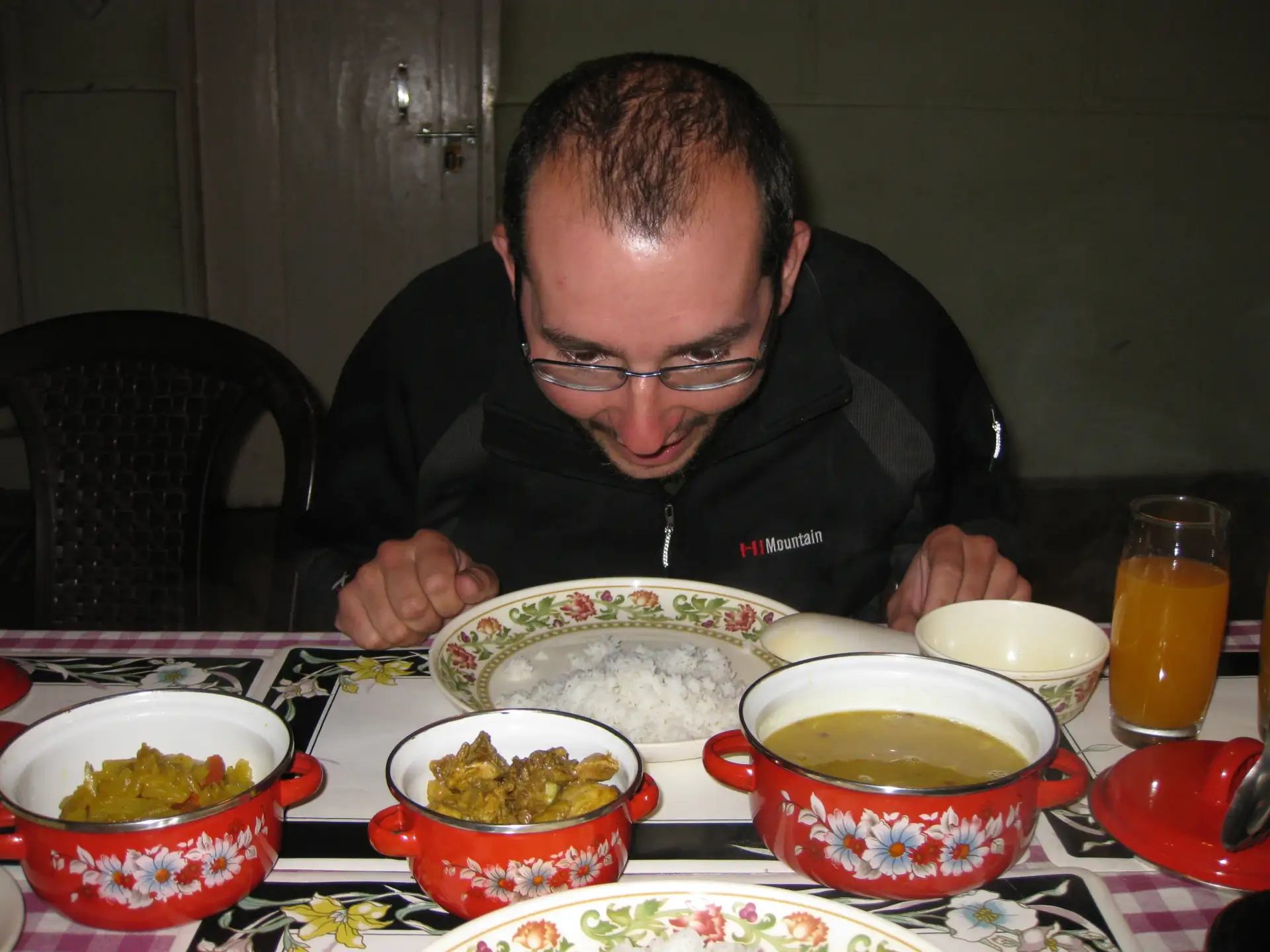
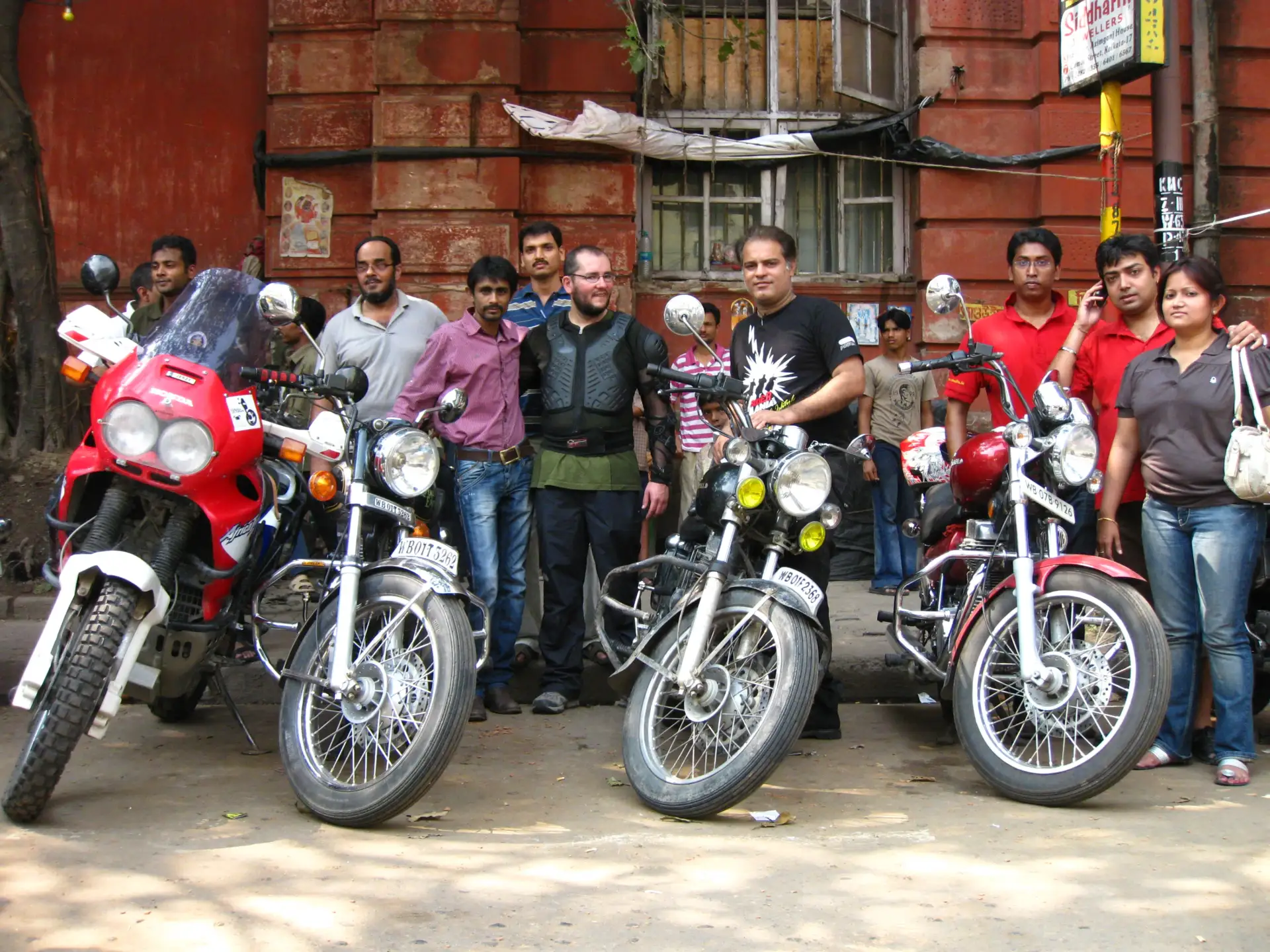

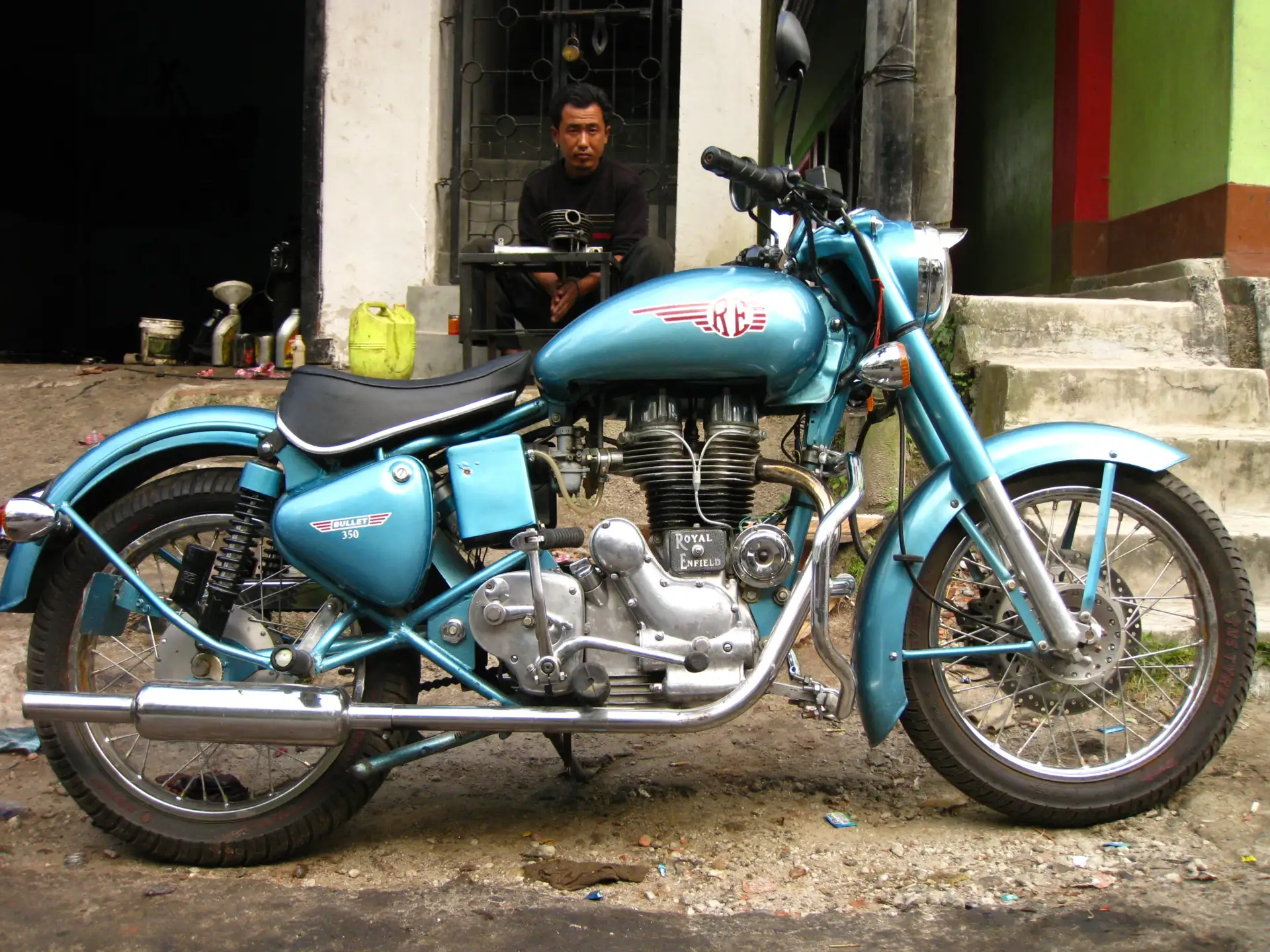
We allocate three days for the trip from Darjeeling to Kolkata. In the end, we manage to cover the route in two days, with one day being very, very long – 11 hours in the saddle. We leave Darjeeling before 6 am, catching a beautiful sunrise along the way. The first part of the road is the last bit of mountains. Traditionally, we choose a side road. We want to avoid passing through our “least favorite” Siliguri. The choice turns out to be a hit: the road is beautiful, empty, and surrounded by tea plantations. Kanchenjunga bids us farewell from behind.
As predicted, descending to the lowlands greets us with heat and increasing traffic on the roads. For several kilometers, we ride on a two-lane highway, which pleasantly surprises us. Apart from having to constantly watch out for cars and animals moving against the flow, the road goes quite smoothly and quickly. Even the heat doesn’t bother us too much. After 200 km, things get tougher. The highway ends as unexpectedly as it began. The next 200 km are on a very narrow and exceptionally crowded road – after all, it’s the main artery connecting the gigantic port in Kolkata with the north of the region.
The passages through towns are particularly challenging, and in terms of “absurdities and craziness on the road,” Indians surpass themselves. Arriving in Behrampore after 11 hours of road struggles, we are truly exhausted. We don’t even have the strength to visit the local palace. We find the only hotel in town and crash like flies. The second part of the route to Kolkata seems calmer and less crowded.
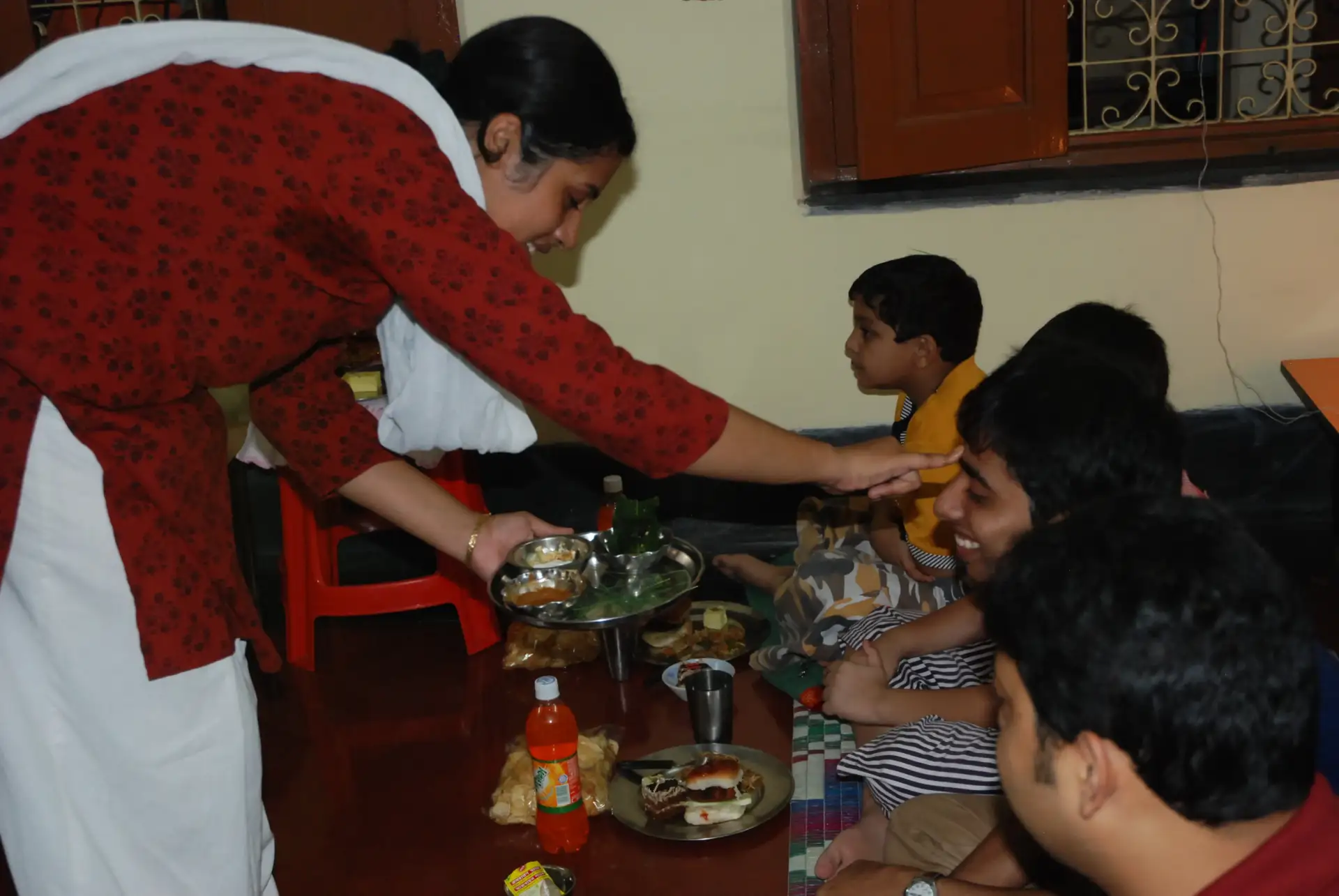
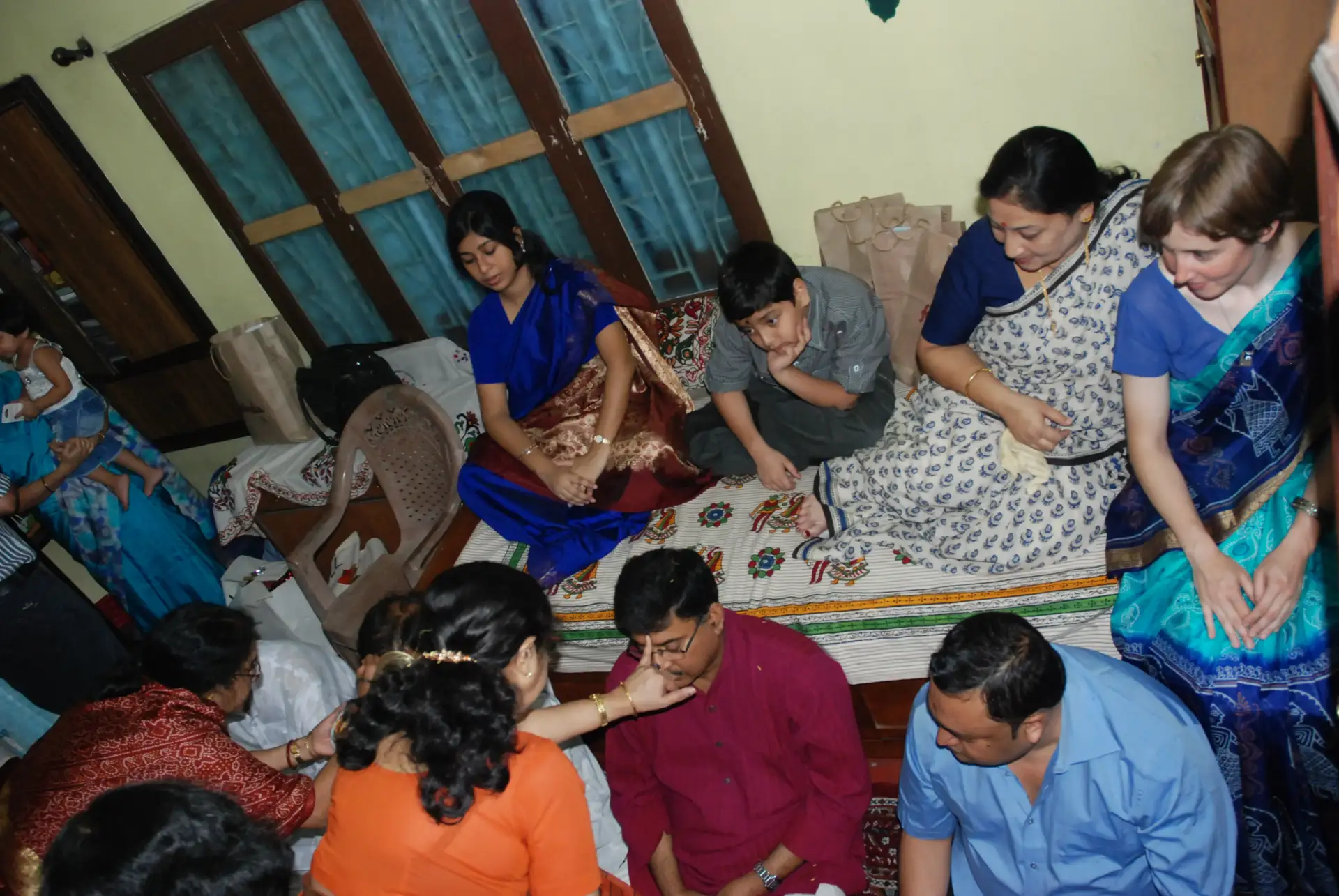
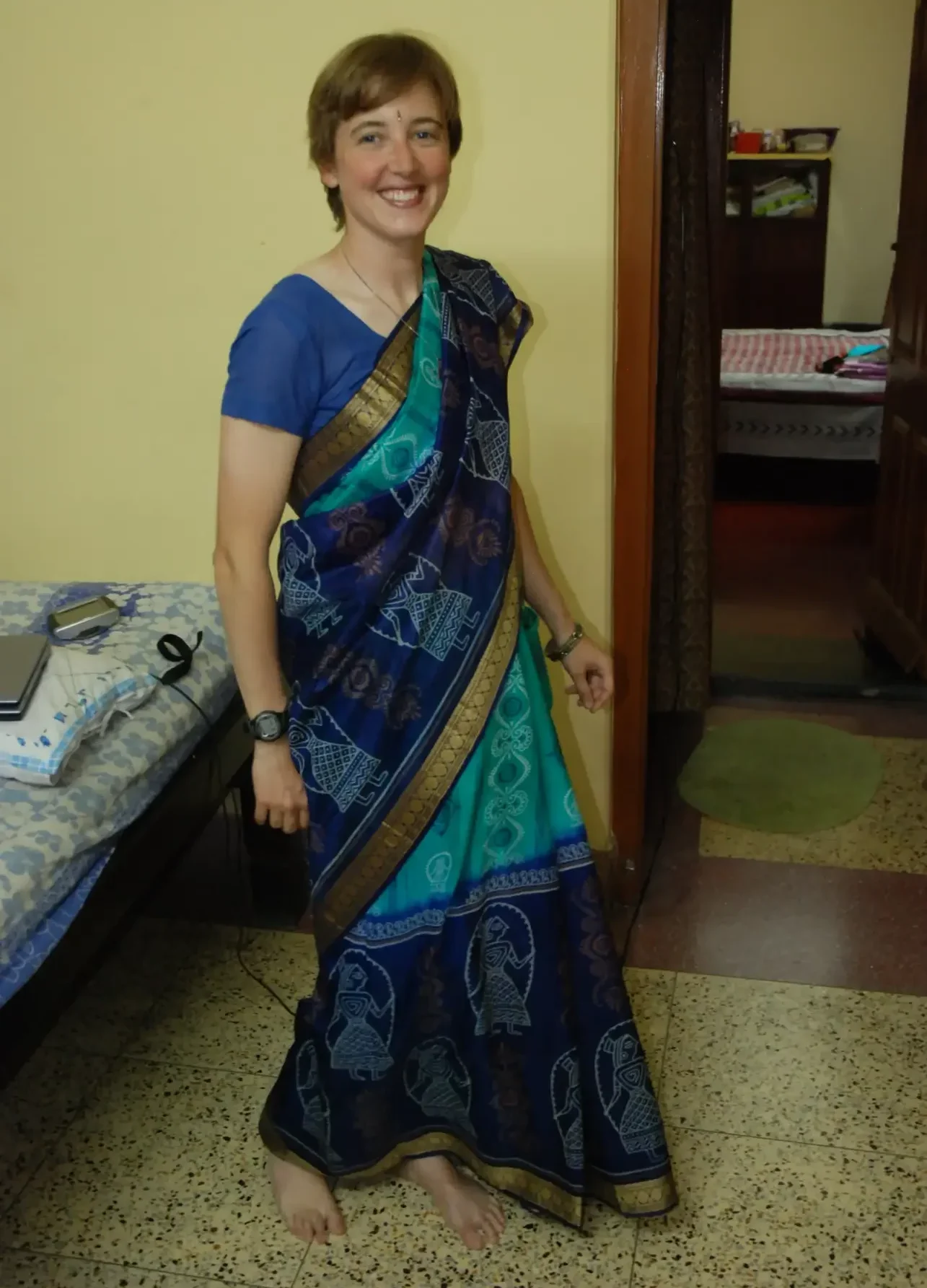
MOTORCYCLE TRIP TO KALI PUJA – KOLKATA
The real jungle, unlike anything we’ve experienced elsewhere in India, begins at the city’s outskirts. We will never forget entering Kolkata. Fortunately, we don’t have to push through to the center and drive through the entire city. In Kolkata, we stay at a friend’s house – Avik and his family. Avik lives in the northern part of the city, and we find it quite easily. The family welcomes us exceptionally warmly and friendly. For a few days, we can participate in the real, everyday life of an Indian family, including the Kali Puja celebrations.
The family celebrations of this important festival for Bengalis are unique and unforgettable for us. Family gatherings, lunches, and blessings are endless (and families here are really large). Every night, practically until morning, the sky is lit up by fireworks. Special, colorful altars dedicated to goddess Kali are set up on the streets. Not without reason, the festival is called the festival of lights. At one of the ceremonies, I wear a sari, just like a real Indian woman. Avik’s mother and sister help me properly wrap myself in the five-meter piece of fabric. It’s not easy. Of course, everyone had a great laugh (including us).
FESTIVALS CELEBRATED IN KOLKATA
Kali Puja is one of the most important festivals celebrated in Kolkata, dedicated to the goddess Kali, symbolizing power and the triumph of good over evil. The festival coincides with Diwali and is celebrated with great enthusiasm. During Kali Puja, devotees decorate their homes and streets with colorful lights and decorations. Temporary altars (pandals) with images of goddess Kali are set up, where prayers, rituals, and sacrifices take place. Kolkata comes alive with fireworks displays, processions, and celebrations that last throughout the night. The festival attracts both locals and tourists, offering a unique spiritual and cultural experience.
DEPARTURE FROM KOLKATA
The last few days are quite nerve-wracking. We wait a long time for final offers from various shipping companies. We quickly learn that some of the most commonly used and apparently favorite words by Indians are: “It is not possible” or “Give me more time.” The problem is that we don’t have more time. In most cases, it turns out that what was initially “not possible” becomes “possible,” only at twice the price. We get increasingly fed up with the changing price and time proposals each day. Eventually, we manage to settle everything with “Continental Carriers.”
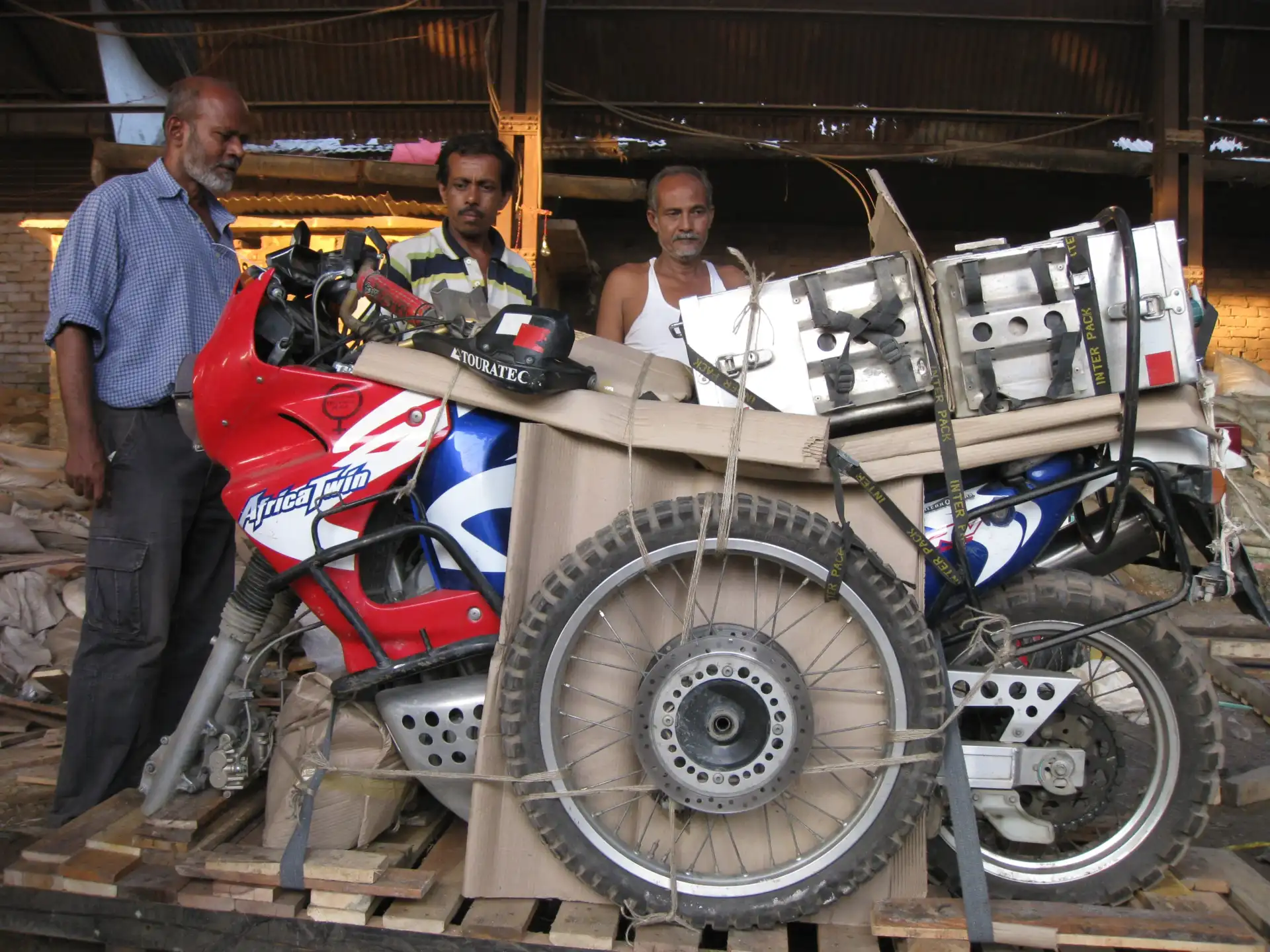
ORGANIZING INTERCONTINENTAL MOTORCYCLE TRANSPORT
This is my first encounter with organizing intercontinental motorcycle transport, and I have learned all the pains from a traveler’s perspective. It was a valuable experience that allowed me to understand the challenges and nuances of such a complex undertaking. Thanks to this, I could better prepare to handle this professionally as part of MotoBirds. Now, having the knowledge and practice, I am ready to support other motorcycle travel enthusiasts in realizing their dreams of traveling to the farthest corners of the world.
Due to price differences, we opt for sea transport to Gdynia, foregoing the previously planned option of flying the motorcycles to Germany. Despite the initial difficulties in discussions with Continental, it turns out that with each day, things go better, faster, and more concretely. Overall, all the paperwork goes without any problems. We also don’t have to “fight” with customs officers: Continental handles the entire customs clearance process without our involvement.

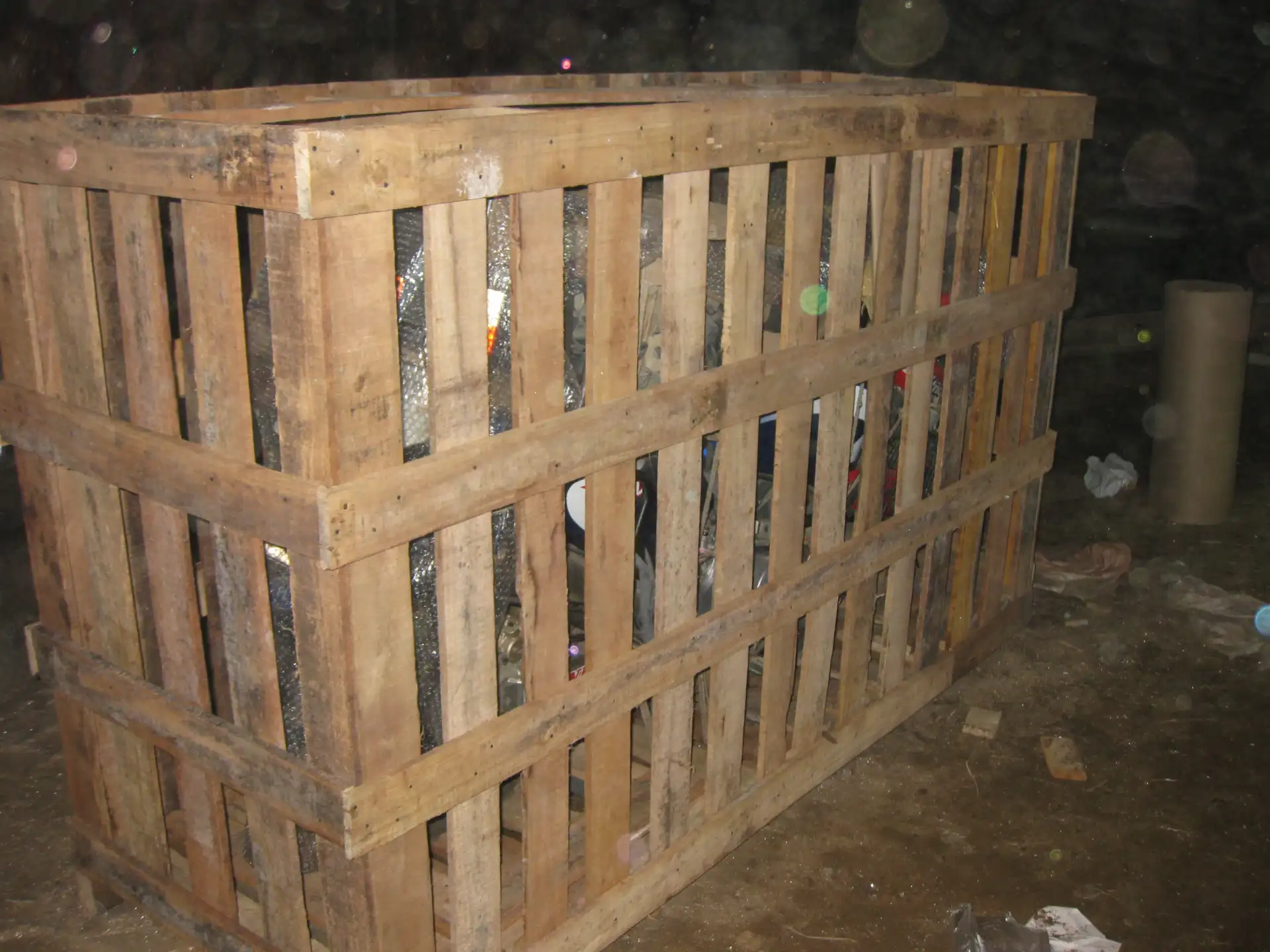
ENDING THE MOTORCYCLE TRIP TO INDIA – PACKING THE MOTORCYCLES
Packing the motorcycles in wooden crates is a new experience for us. Of course, we don’t leave our equipment to the “mercy of Indian packers.” Preparing (disassembling) the motorcycles and packing them takes us practically the whole day. Fortunately, the packing team and crate preparers turn out to be quite sensible, and we have no problems packing the equipment as we wanted. Only the working conditions leave much to be desired: the whole process takes place in a dilapidated, dusty, and industrial waste-filled port warehouse.
HOW MOTOBIRDS PACKS MOTORCYCLES FOR TRANSPORT
At MotoBirds, we place motorcycles in our special metal cage or on a platform. Importantly, we do not disassemble the front wheel, which is a big advantage. This eliminates the risk of damaging the ABS wheel or one of the brake discs. Additionally, we do not interfere with the torque of your motorcycle’s bolts and nuts, which is crucial for your safety. This packing method not only increases safety but also speeds up the entire process of preparing the motorcycle for transport.
For more information on packing motorcycles, read the article: “How MotoBirds Packs Motorcycles for Transport.”
After a full day of work, the packed motorcycles are ready to be transported to the port customs area. At this point, our motorcycle adventure in Central Asia comes to an end. The last kilometers in Asia are ridden through a particularly crowded Kolkata that day (the ride is quite exciting). Now we have a few days for a “holiday without a motorcycle.” We decide to visit Odisha and its famous temples, with the Sun Temple at the forefront. We also want to “wallow” in the warm sea and enjoy the last days of sun and good weather.
TEMPLES IN ODISHA
Odisha is a state in eastern India known for its rich history, culture, and impressive temples. The most famous is the Sun Temple in Konark, a UNESCO World Heritage Site. Built in the 13th century, it is shaped like a giant chariot drawn by stone horses and adorned with numerous bas-reliefs depicting scenes from everyday life, mythology, and the Kama Sutra.
Other important temples in Odisha include the Jagannatha Temple in Puri, one of the most important pilgrimage centers in India, and the Lingaraja Temple in Bhubaneswar, known for its exquisite Kalinga architecture. Odisha is also known for its beautiful beaches, wildlife, and traditional crafts, making it an attractive tourist destination.
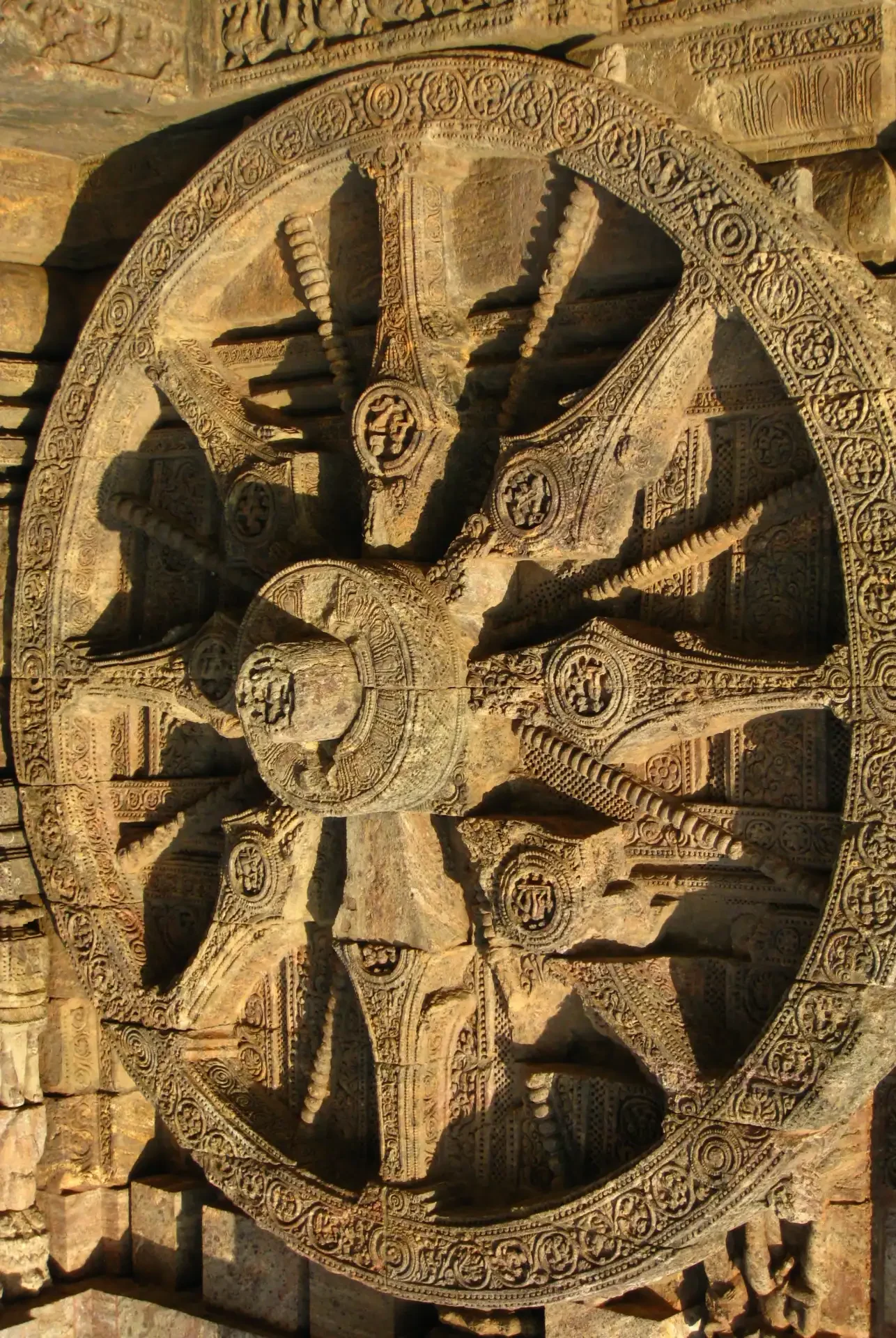
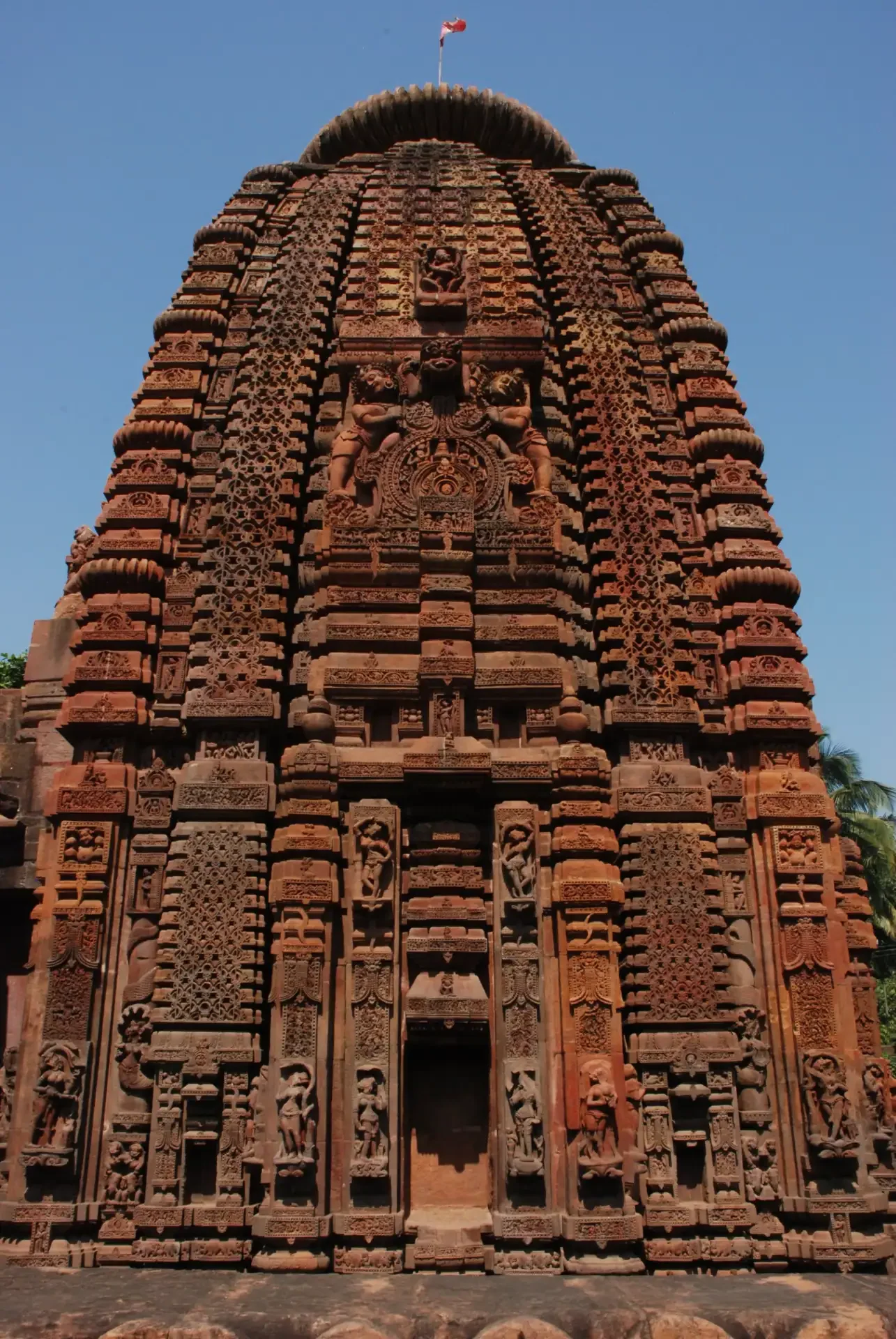
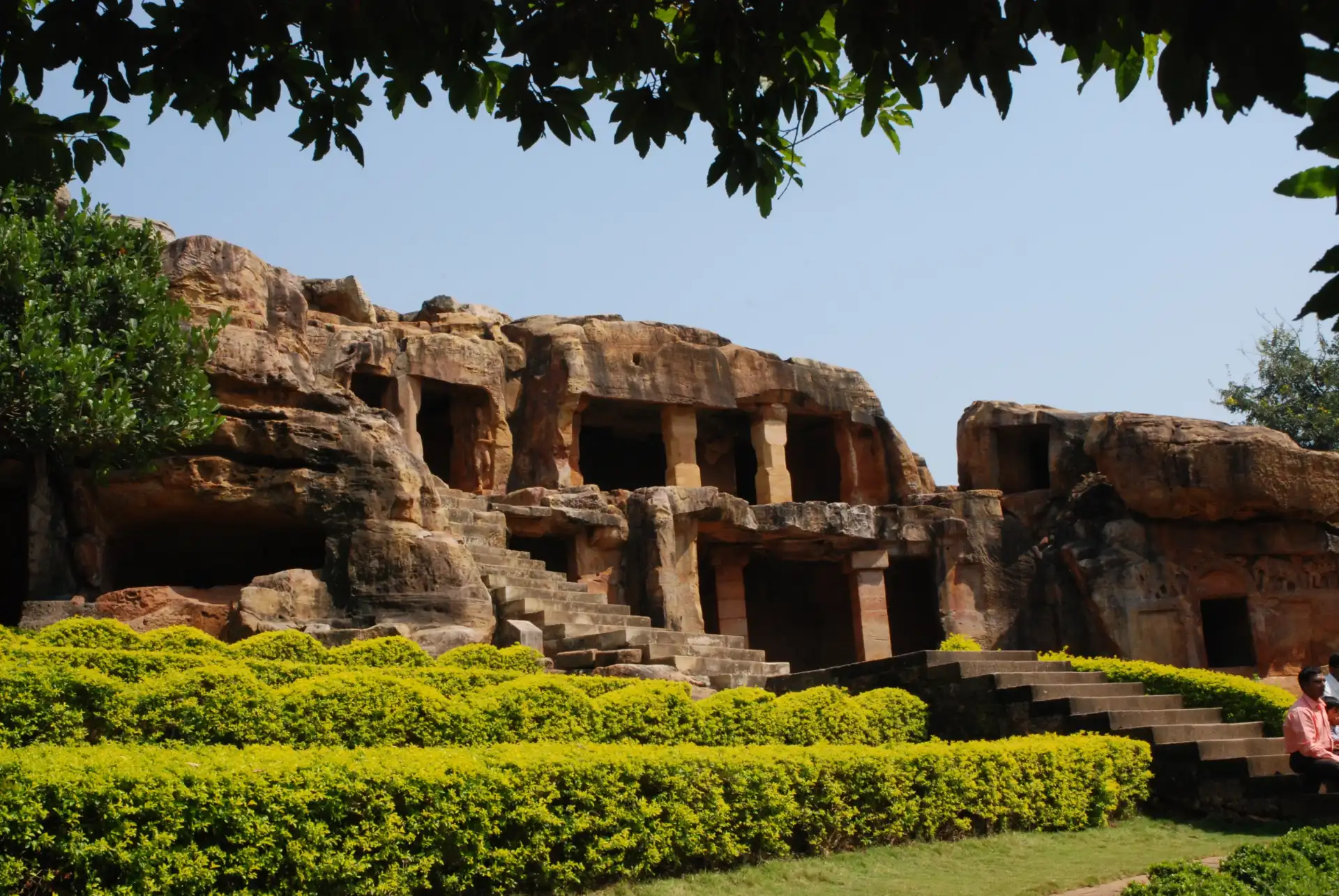
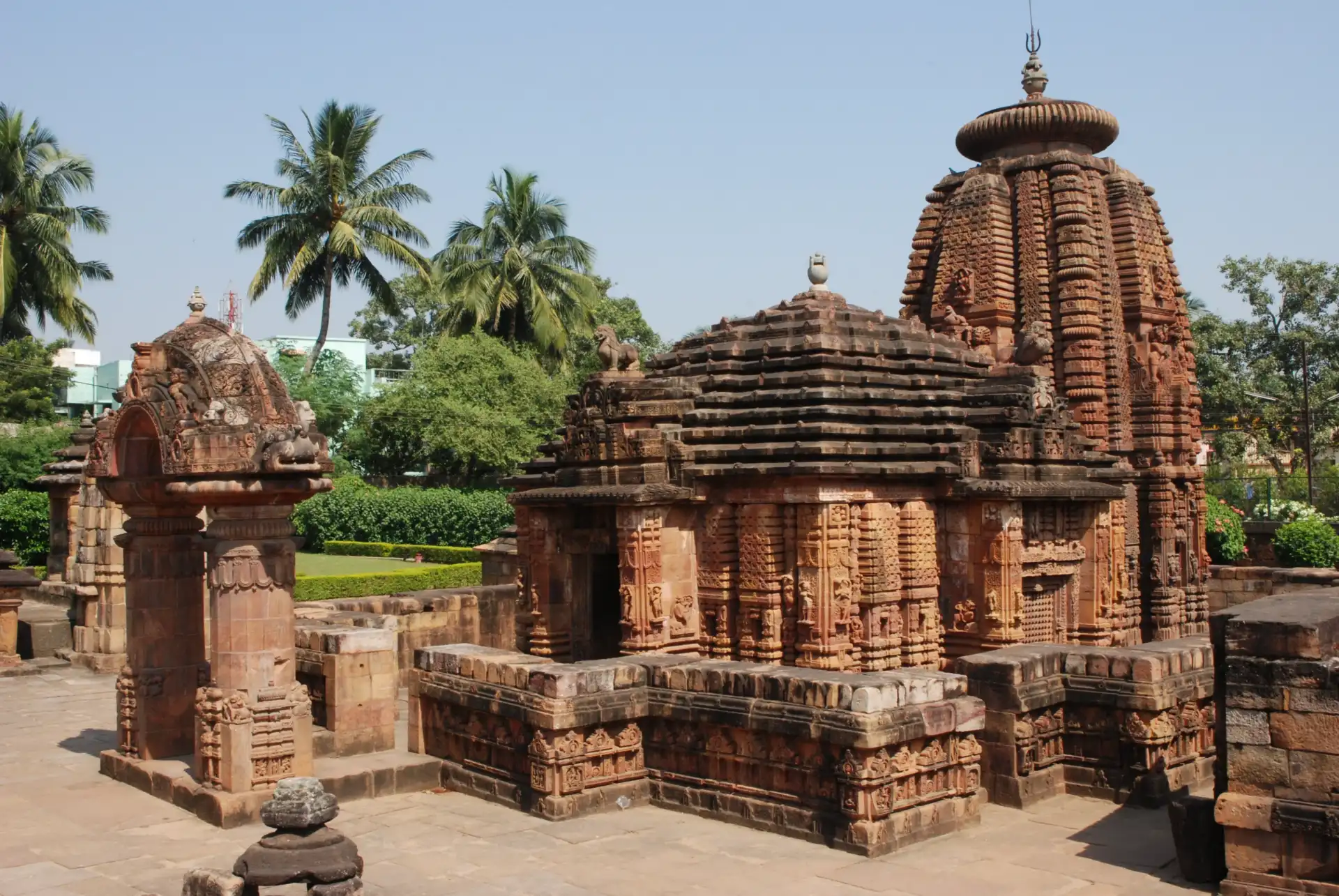
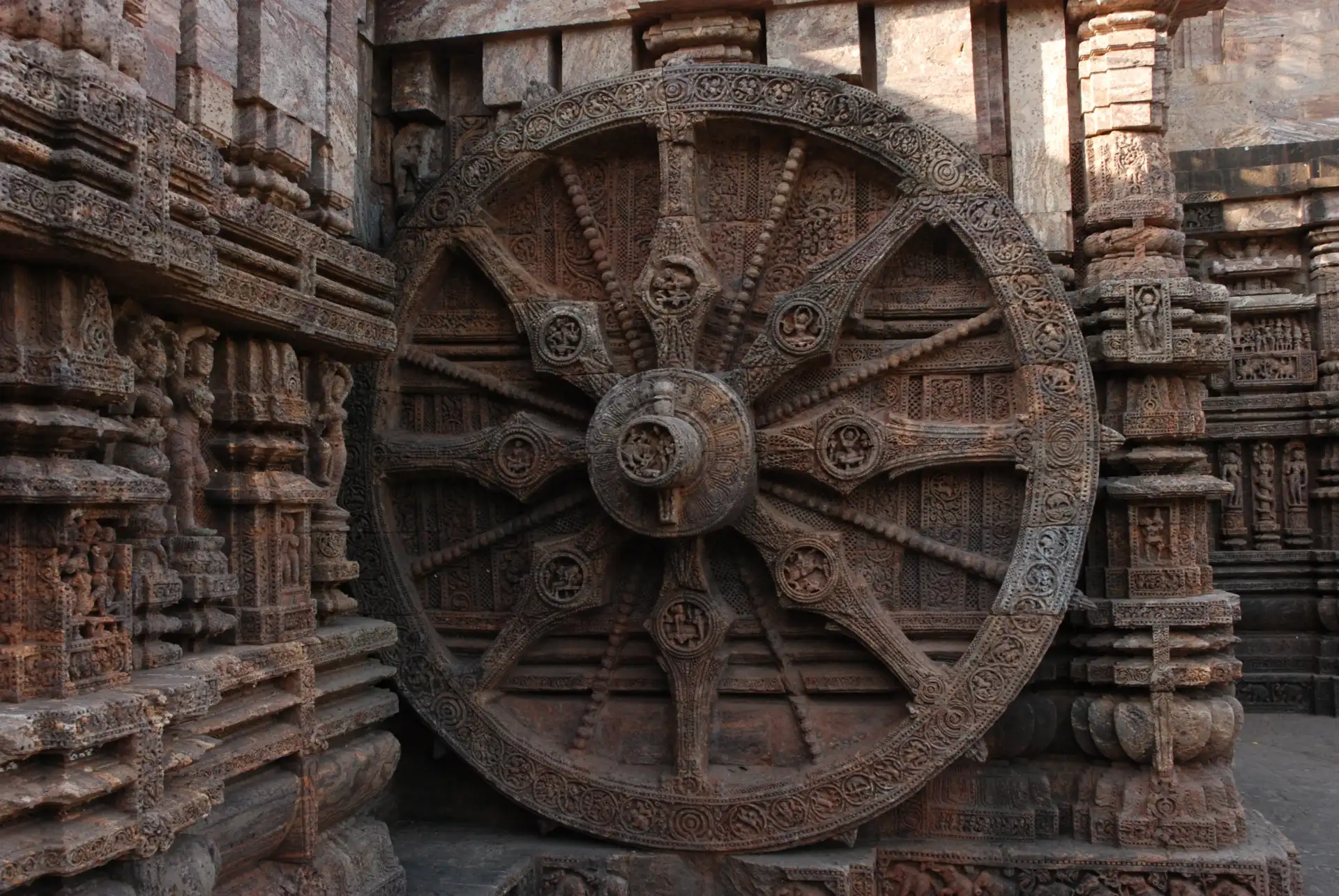
TRIP TO PURI
After packing the motorcycles, we meet with our Enfield friends. Together, we go to a small, hidden restaurant with South Indian food. As usual, everything is delicious. At 10 pm, we are driven to the train station on Enfields, but as passengers. A 9-hour journey to Puri awaits us, of course, on a sleeper train. The only downside to this trip was the air conditioning. The train staff seemed to want to freeze the passengers, and to avoid freezing, we had to wear everything we had with us. Puri is located right by the sea and is famous for the temple of Lord Jagannatha. Unfortunately, we could only see the temple from the outside; only Hindus are allowed inside.
The owners of a nearby private library take advantage of this situation for their own needs. They invite all white tourists to the roof of the building, which offers a beautiful view of the temple. Of course, all for a “voluntary donation to the library.”
At the temple square, we encounter an incredible crowd, even by Indian standards. Our rickshaw is completely blocked by pilgrims rushing to the temple. The chaos and noise are indescribable. We quickly escape to our quiet hotel, located 6 km outside the town.
JAGANNATHA TEMPLE
Puri is a seaside town in Odisha, known mainly for the Jagannatha Temple, one of the most important pilgrimage centers in India. The temple attracts millions of devotees, especially during the annual Rath Yatra festival, when giant chariots carry the deities’ images through the streets of the town. Puri is also famous for its beautiful sandy beach on the Bay of Bengal, popular with tourists. The town offers a wealth of local culture, art, and traditional crafts, creating a unique atmosphere of spirituality and relaxation.
REST IN PURI
For the last two days of our crazy vacation, we want to rest in a more “civilized” way. We hunker down for two days in a hotel with a pool, located right by the beach. Besides visiting the amazing temples of Odisha (which takes up one day), we read books, walk on the beach observing local fishermen, swim in the sea and the pool, and, of course, enjoy great seafood. We have a small, two-day “retirement holiday.”
One entire day is spent visiting the most important temples in Bhubaneswar (the capital of Odisha) and the Sun Temple in Konark. The temples of Odisha are completely different from all the ones we have seen in India before. The Sun Temple is famous for its numerous bas-reliefs depicting the Kama Sutra. In general, all the temples are beautifully decorated with bas-reliefs. We also see ancient caves inhabited by people over a thousand years ago.
In three days in Odisha, we visit all the major monuments of the region. We also have time to rest. We actually conclude that we are so rested that we could continue the journey. Only we miss our family and friends.
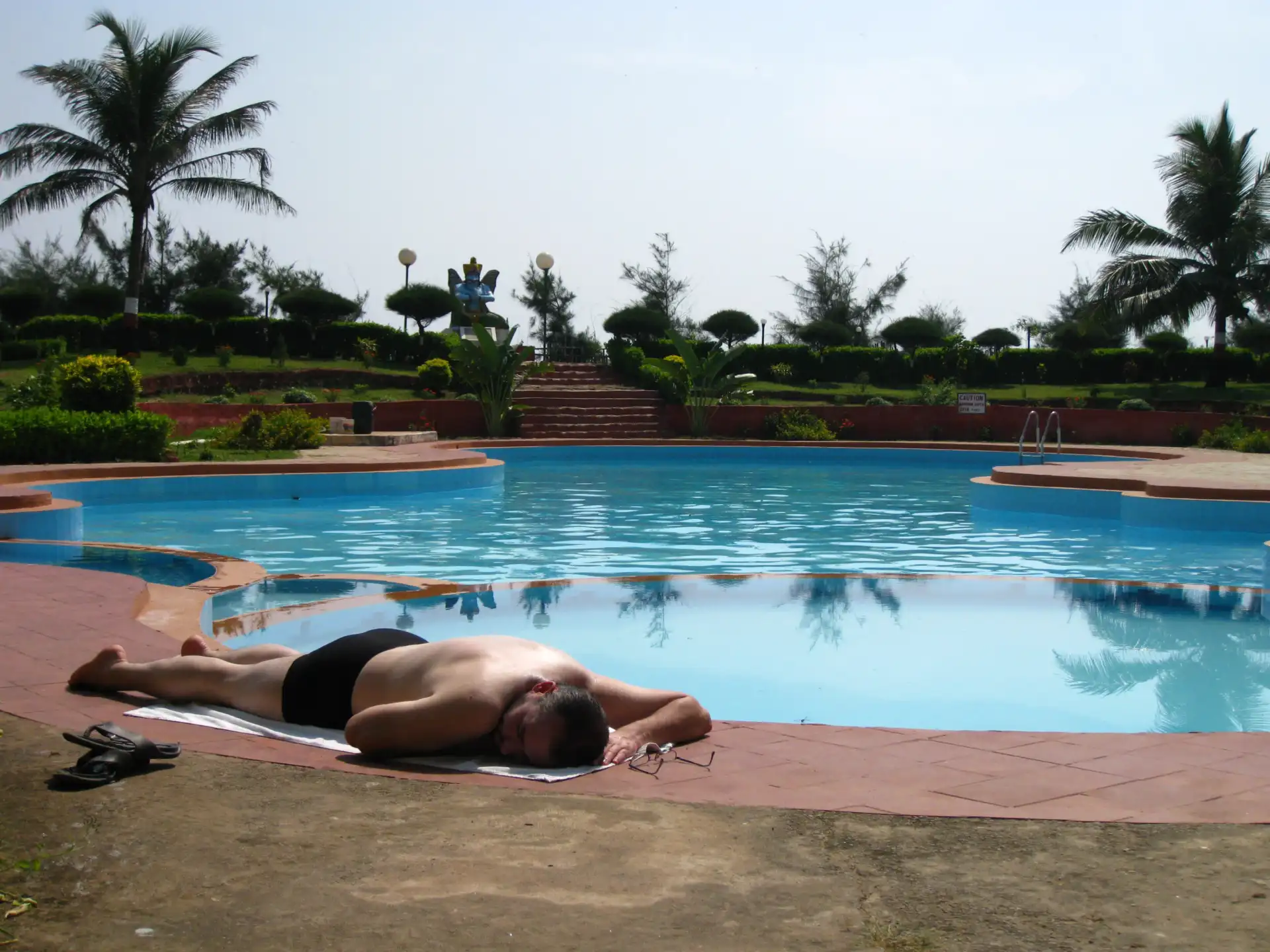
RETURN TO KOLKATA BY NIGHT TRAIN
From Puri to Kolkata, we again take a night train. This time, we prudently block the air conditioning. The train is full again. We arrive in Kolkata in the morning. Before the planned visit to Continental and the customs office, we manage to sleep for two more hours. This is supposed to be a big day, the day of the motorcycle customs clearance. When we arrive at Continental, it turns out that all the “work” has already been done. Customs clearance was managed without our participation. All signs indicate that we have secured the transport of motorcycles to Gdynia, with departure from Kolkata. What a relief. The last, seemingly simple task remains: exchanging Indian rupees for euros. But in India, nothing can be too simple.
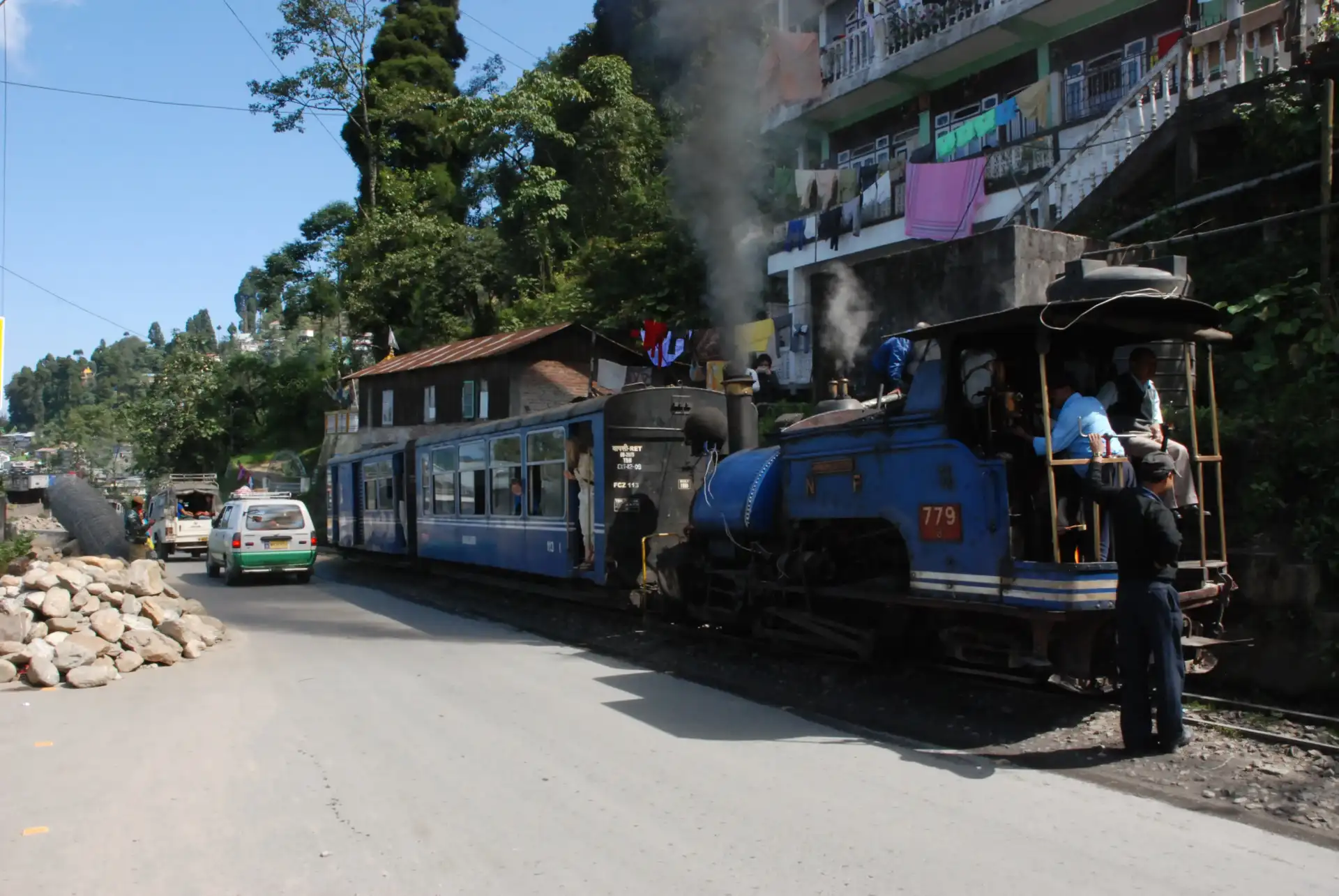
CURRENCY EXCHANGE IN KOLKATA – THE CHALLENGES WE FACED
For over 5 hours, we wander around the center of Kolkata from bank to bank and various exchange points trying to exchange rupees for euros. Everywhere we are turned away. In exchange offices, it turns out that only Indian citizens can exchange rupees for other currencies. Foreigners can only do the reverse exchange: from foreign currencies to rupees. In banks, we are told that only the State Bank of India can help us with such an exchange, and private banks can’t do anything about it. In five different branches of the State Bank of India, various problems arise. We are generally tired and, to put it mildly, annoyed. We haven’t faced such issues with the simplest task anywhere before. Even crossing the Chinese border seemed easier than exchanging money in Kolkata. Finally, we come across a liberal and customer-friendly travel agency. There we manage to exchange money “without official confirmations.”
TRADITIONAL MEAL CONSUMPTION IN INDIA
The day before our planned departure to Poland, we manage to finish all formalities. We spend the last evening in India with Avik and his wife at a house party at their friends’ place. As usual, it’s very pleasant. For the first time (and at the very end of the trip), we have the opportunity to try eating according to the local custom – with hands, without using cutlery. Until now, someone always handed us at least a spoon. Eating rice with hands is even more difficult than with chopsticks, but somehow we manage to finish the entire meal. Traditionally, everyone had a great laugh watching our struggles with the food on the plate.
One could say that this is the end of our journey through Central Asia. After 181 days on the road, we return home. It was fantastic!
TO BE CONTINUED…
Join us on this incredible journey. Once or twice a month, you can expect another installment of our adventure. This way, you will feel the magic of those days, discover the beauty of the places we visited, and relive all the extraordinary moments with us. Each entry is not only a story of adventures but also of the challenges we encountered along the way, the people we met, and the cultures we had the chance to explore.
The world changes, but the memories of our travels remain eternal. What we experienced shaped us and enriched our lives with incredible experiences that we want to share with you. Each episode of our journey will give you the opportunity to travel through time and space, to places full of adventures, surprises, and beautiful landscapes.
We invite you to actively participate in this journey. We look forward to your comments and reflections, and maybe even your own travel stories! Your story can be an inspiration for us and other readers. Share your experiences, insights, and questions with us. Together, we will create a community of motorcycle travel enthusiasts, ready to share knowledge and memories. 🙂
Find out more
Discover all the stages of our historic motorcycle journey from Poland to India. Read more about the Motorcycle Expedition to India with Aleksandra Trzaskowska.


Newsletter subscribers get more!
Join MotoBirds Soaring Newsletter and don't miss any important content, gear tests, travel inspirations and newest offers in the future! We'll also let you know about fresh publications on our blog.

